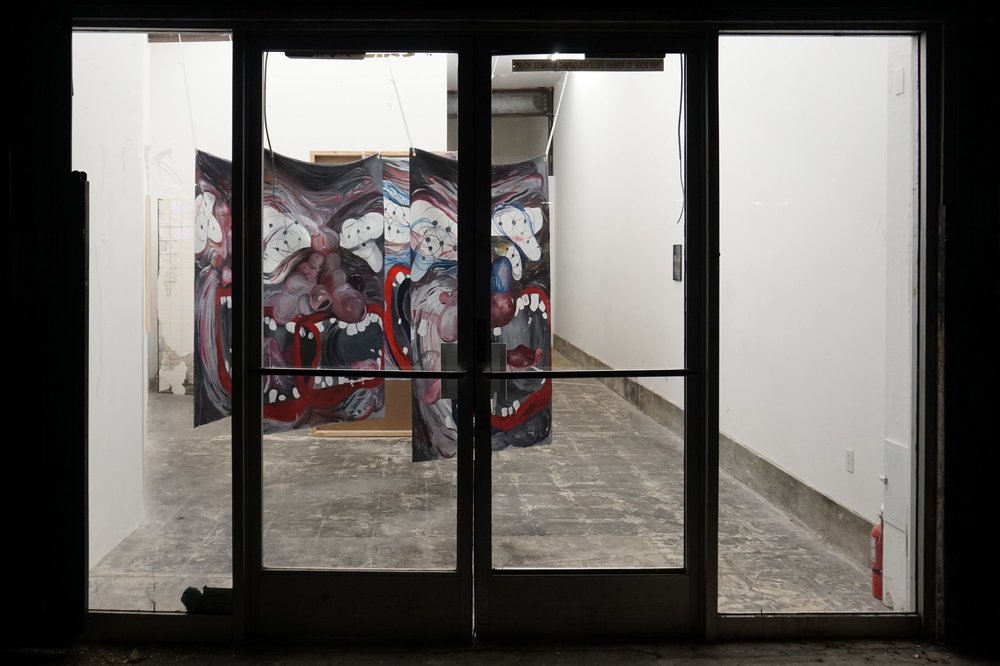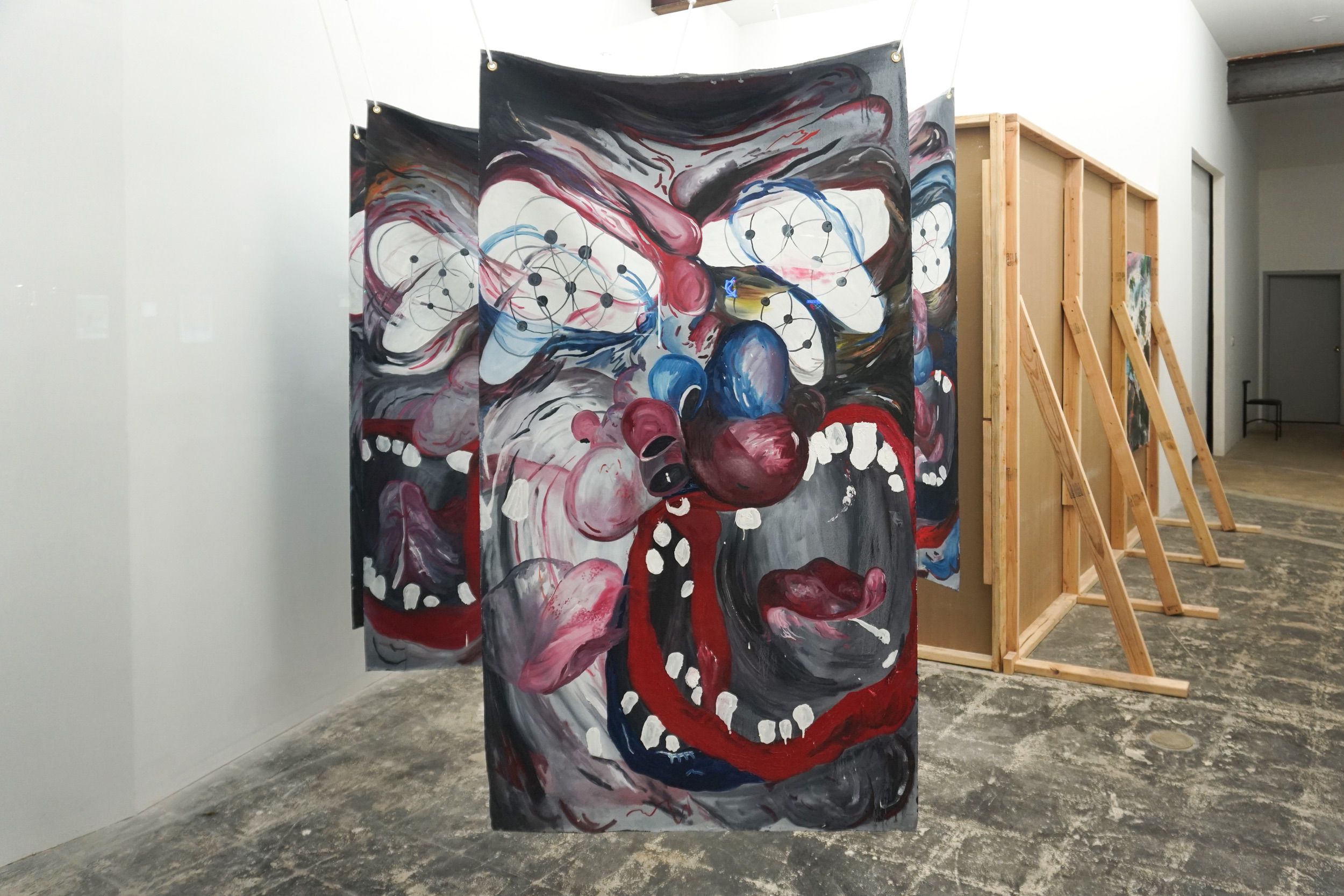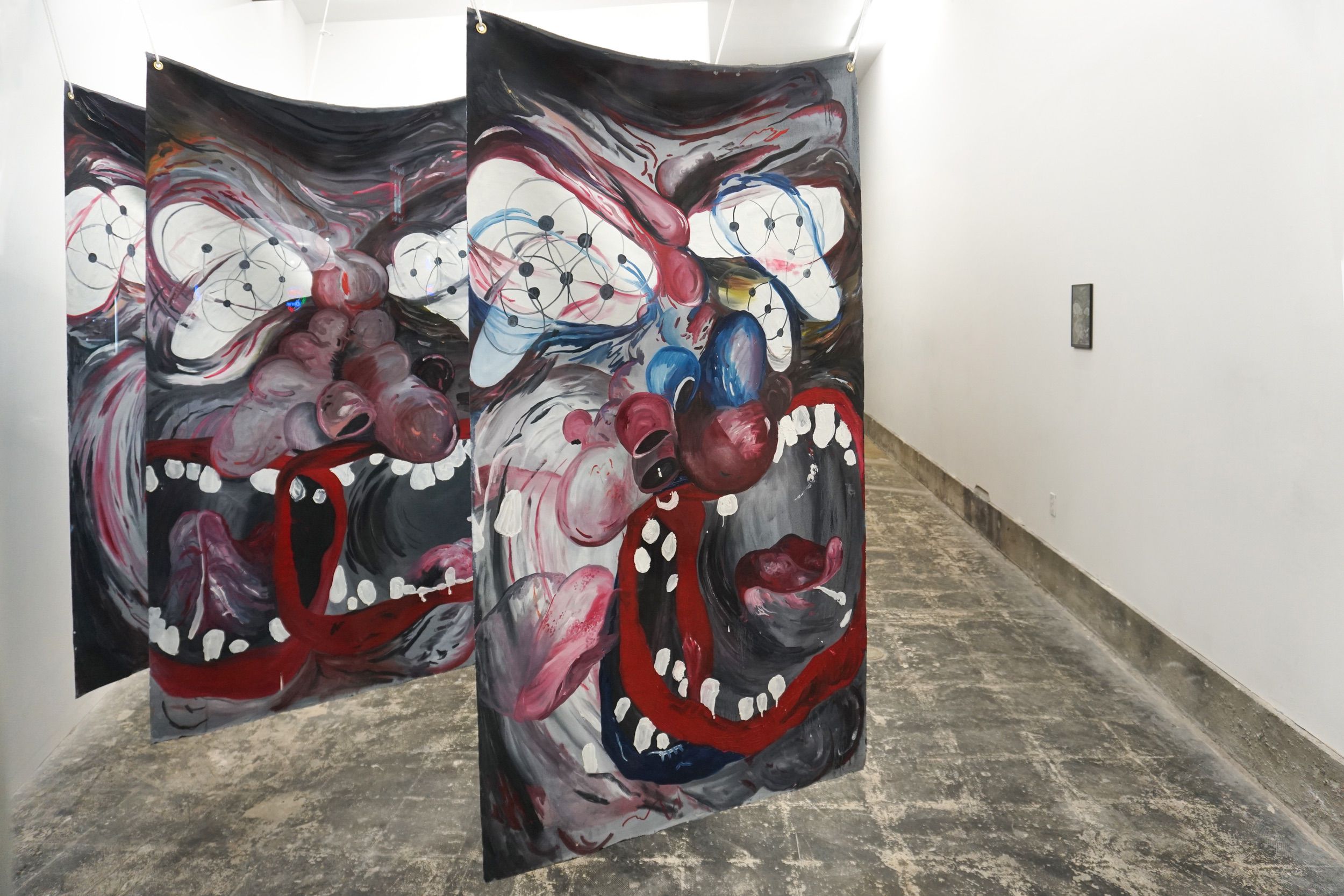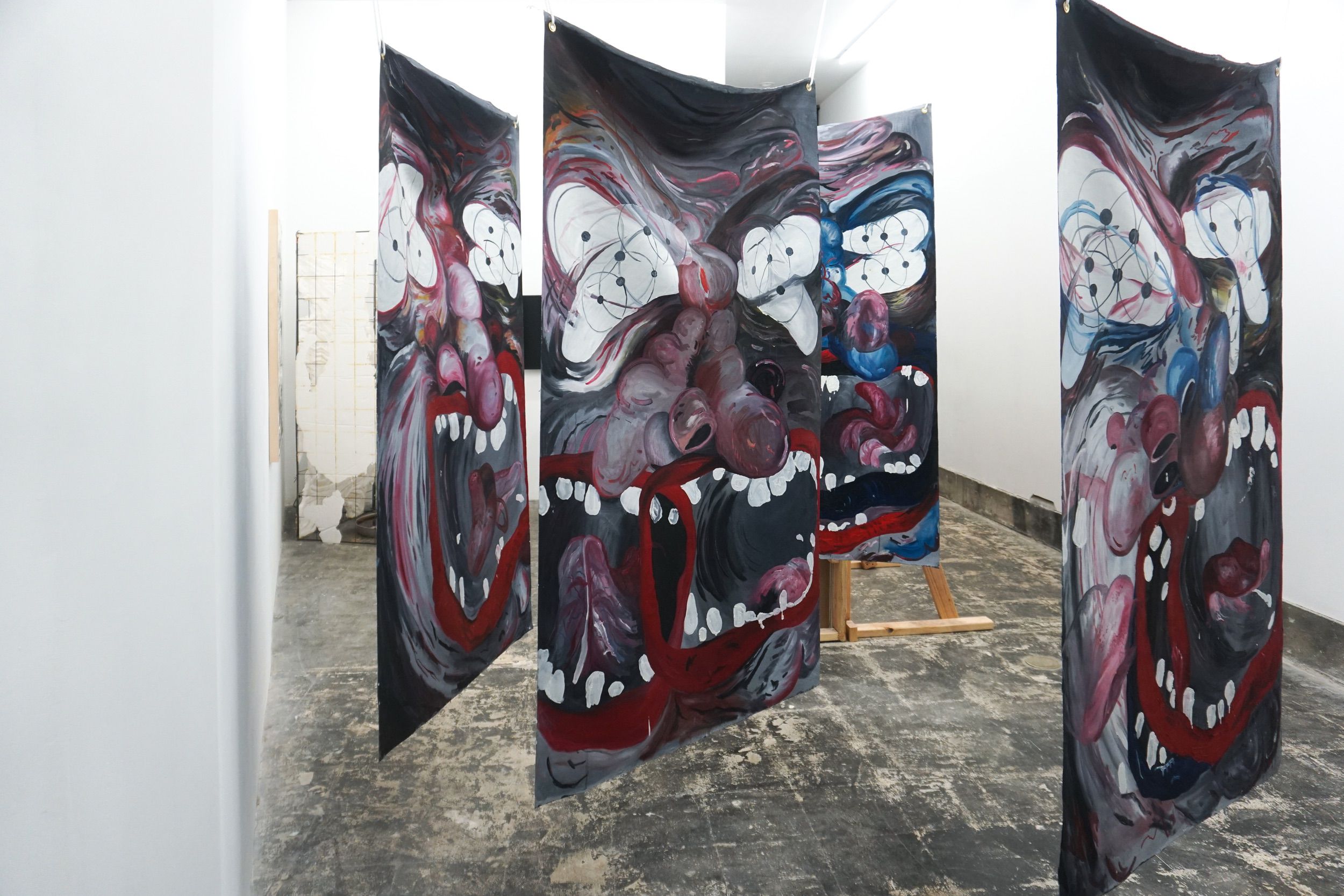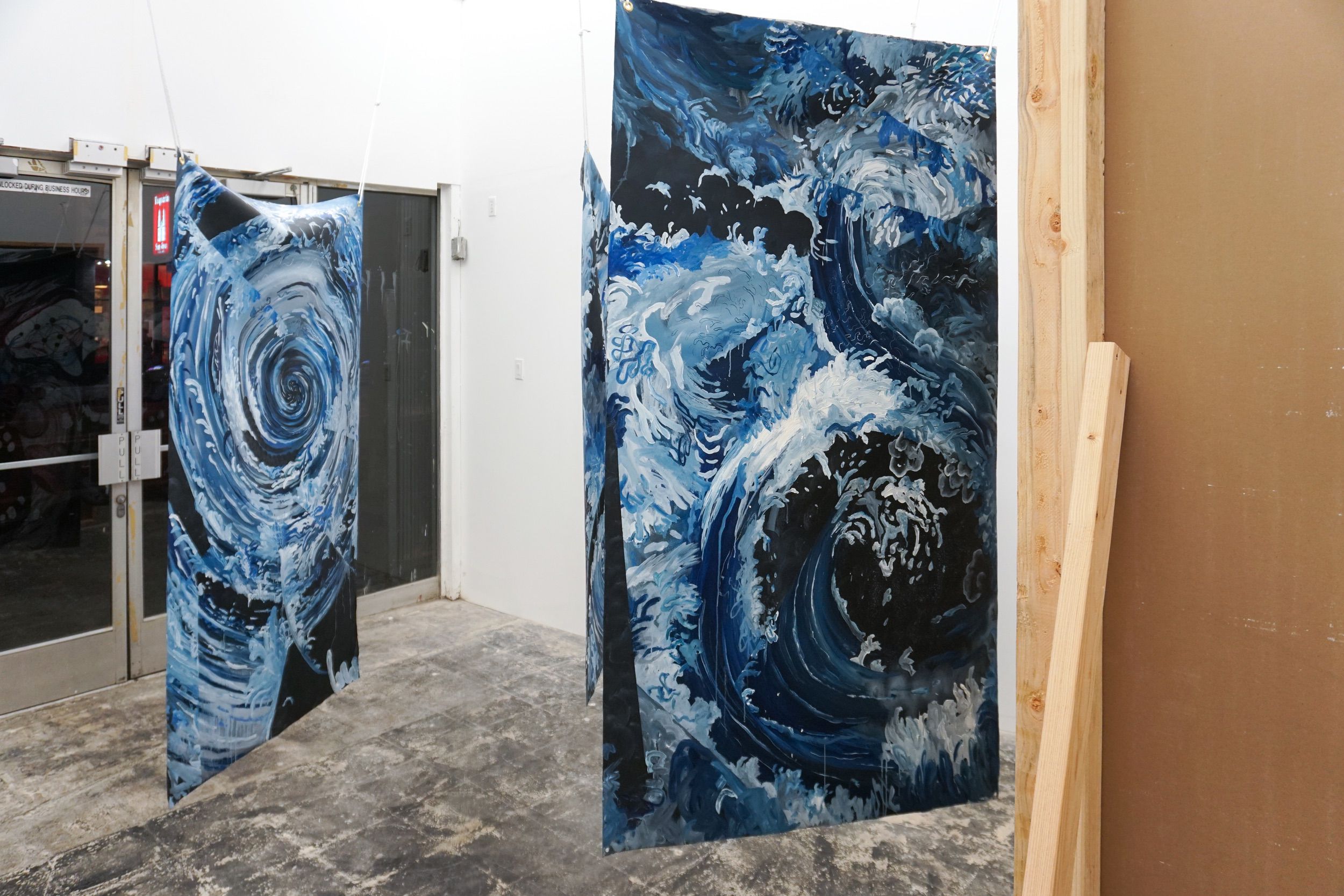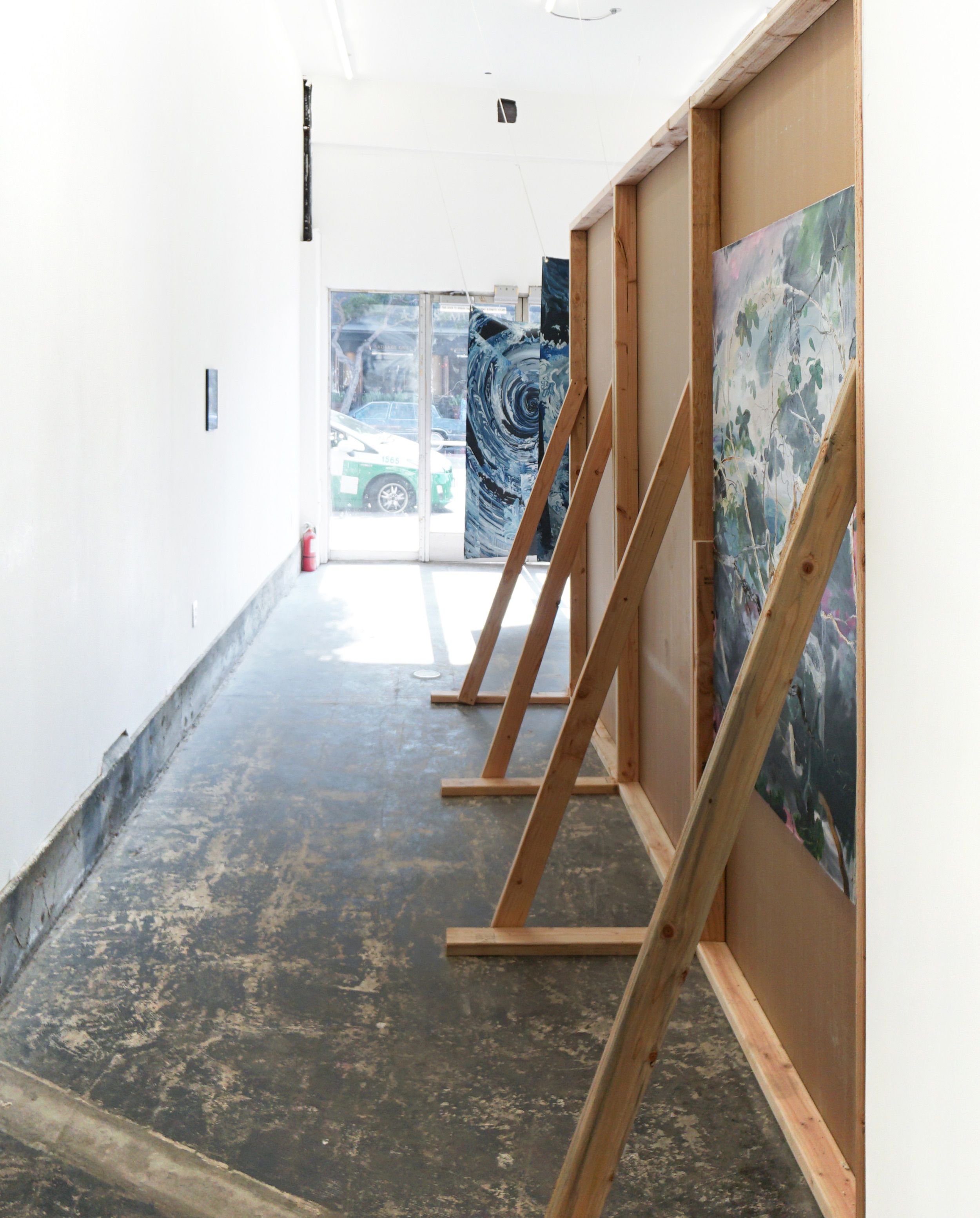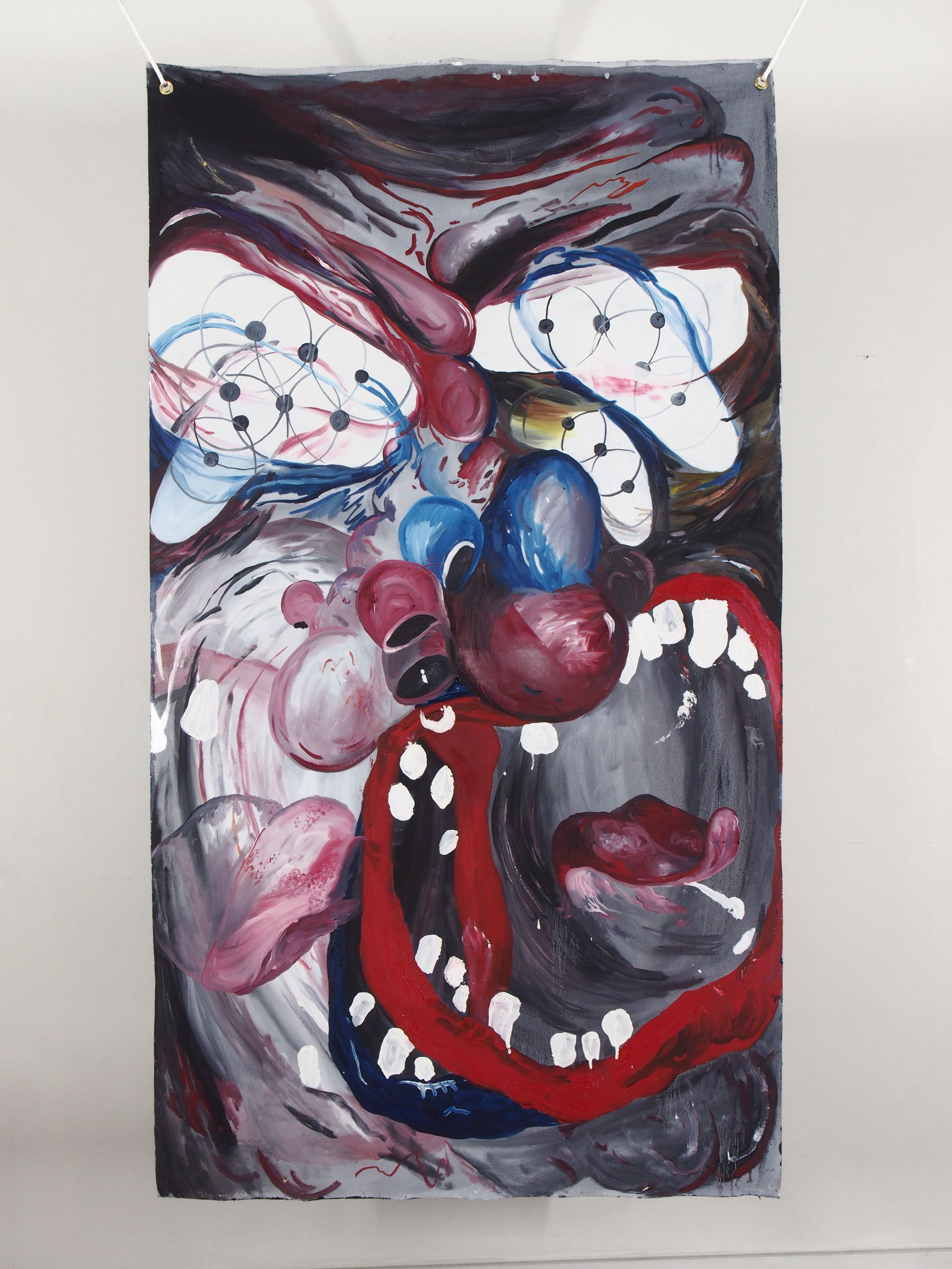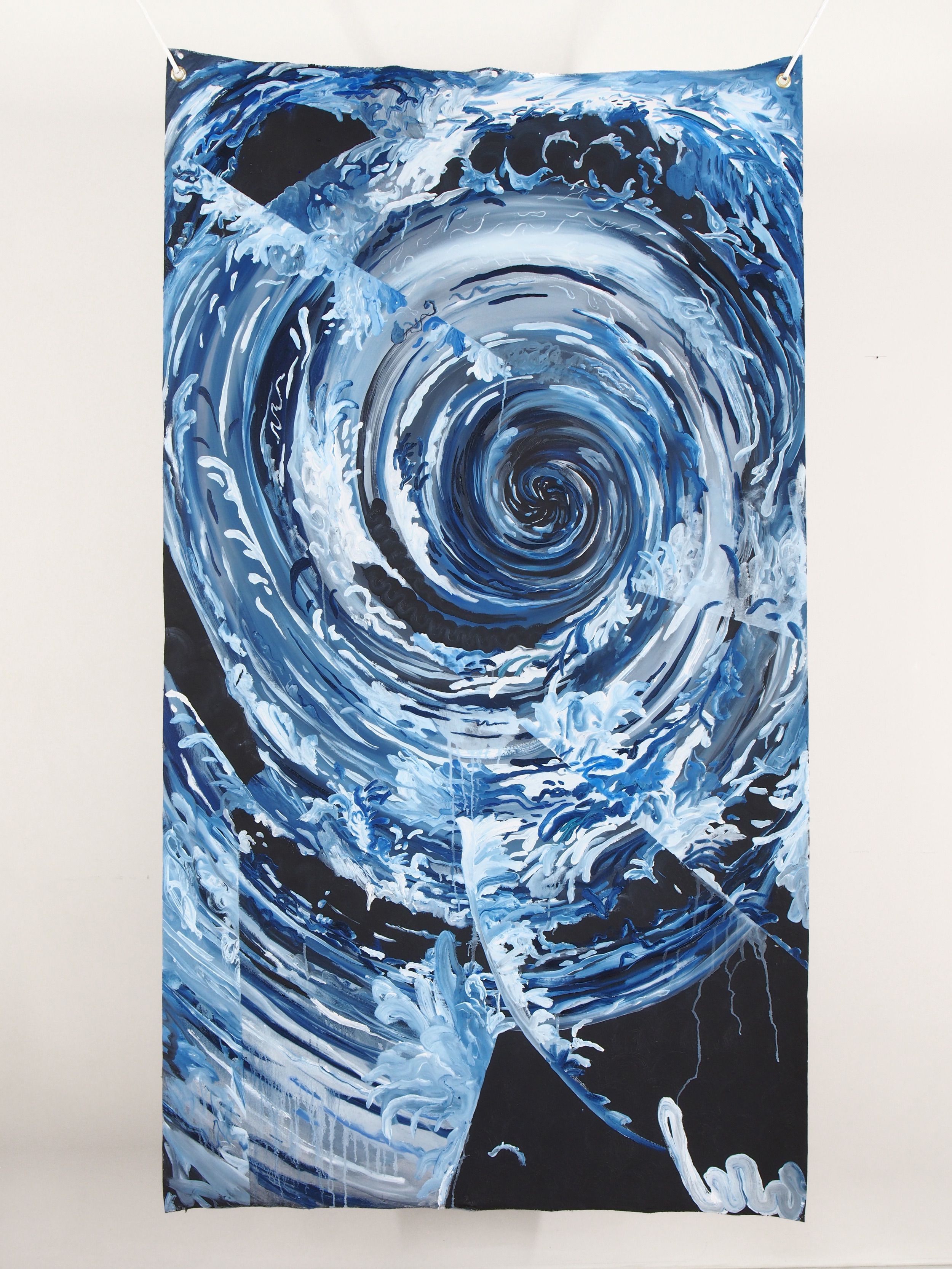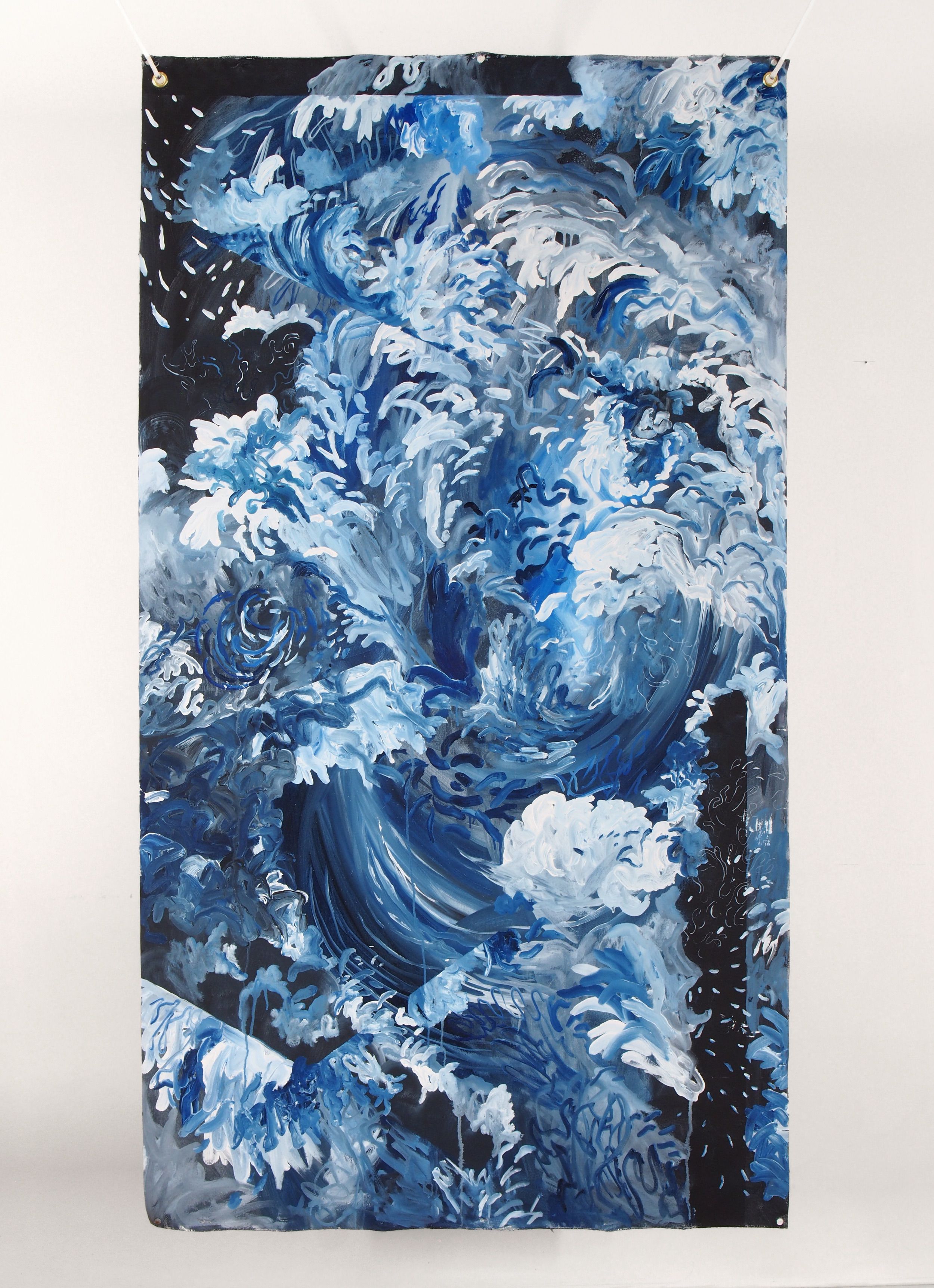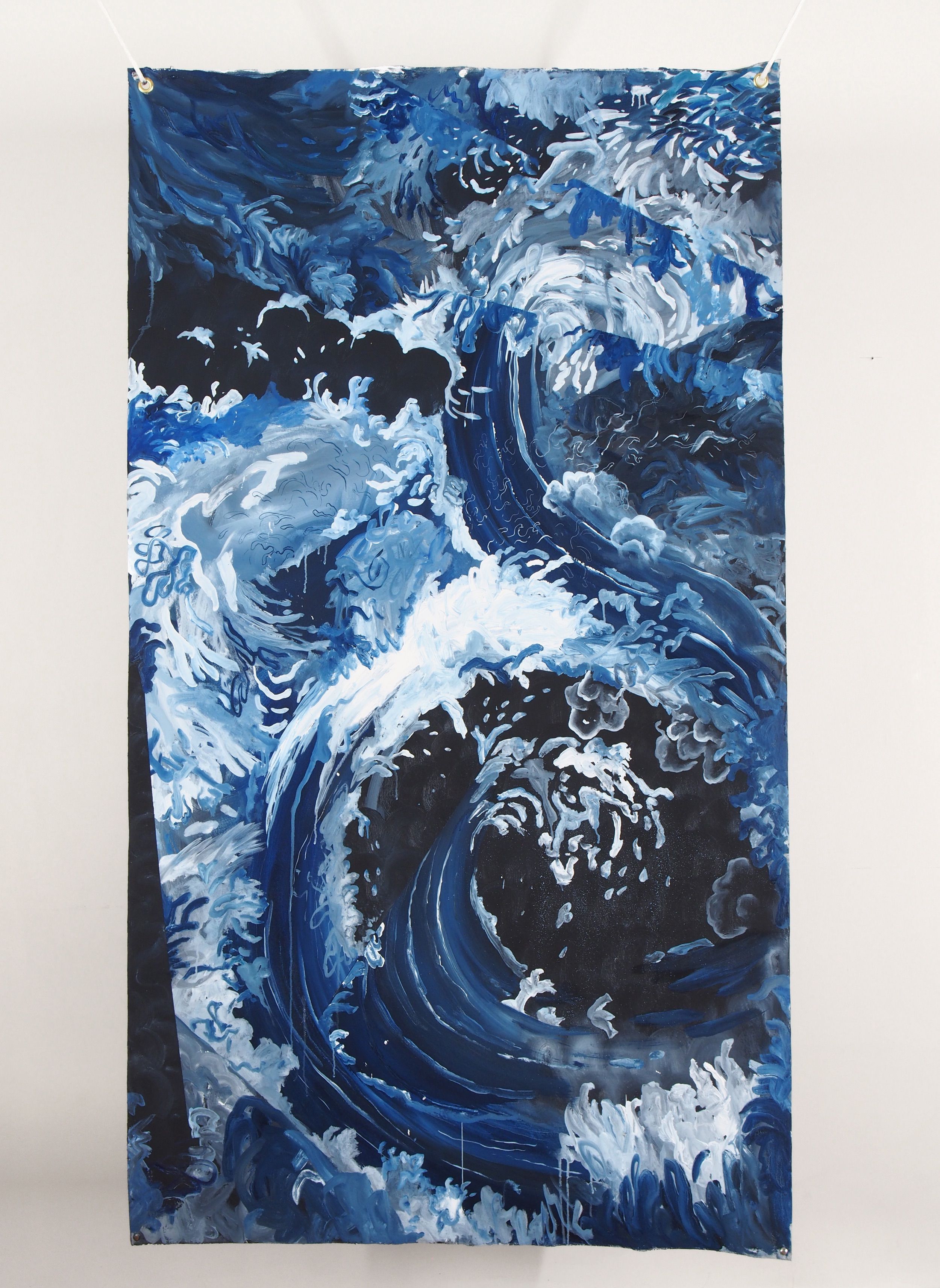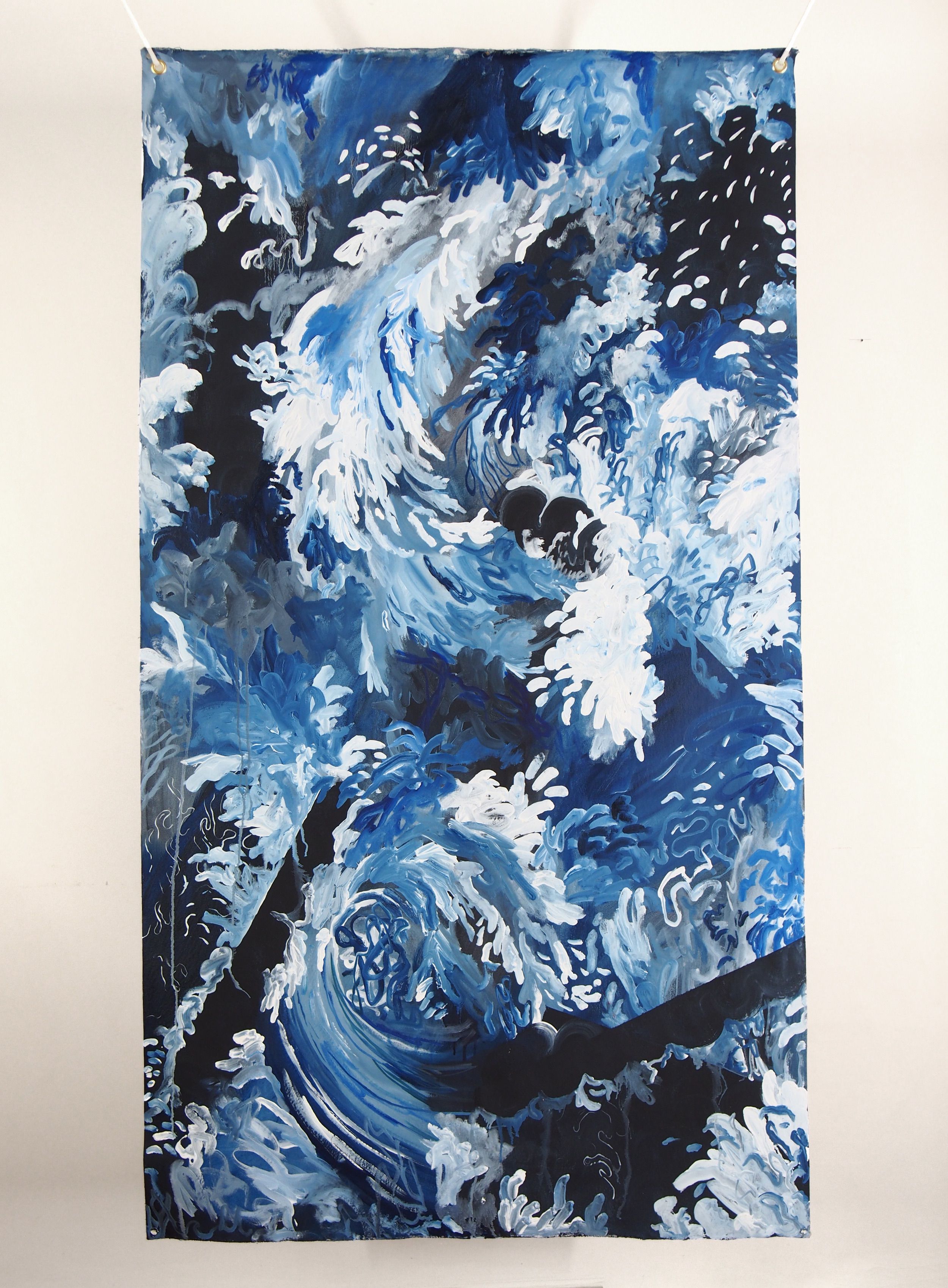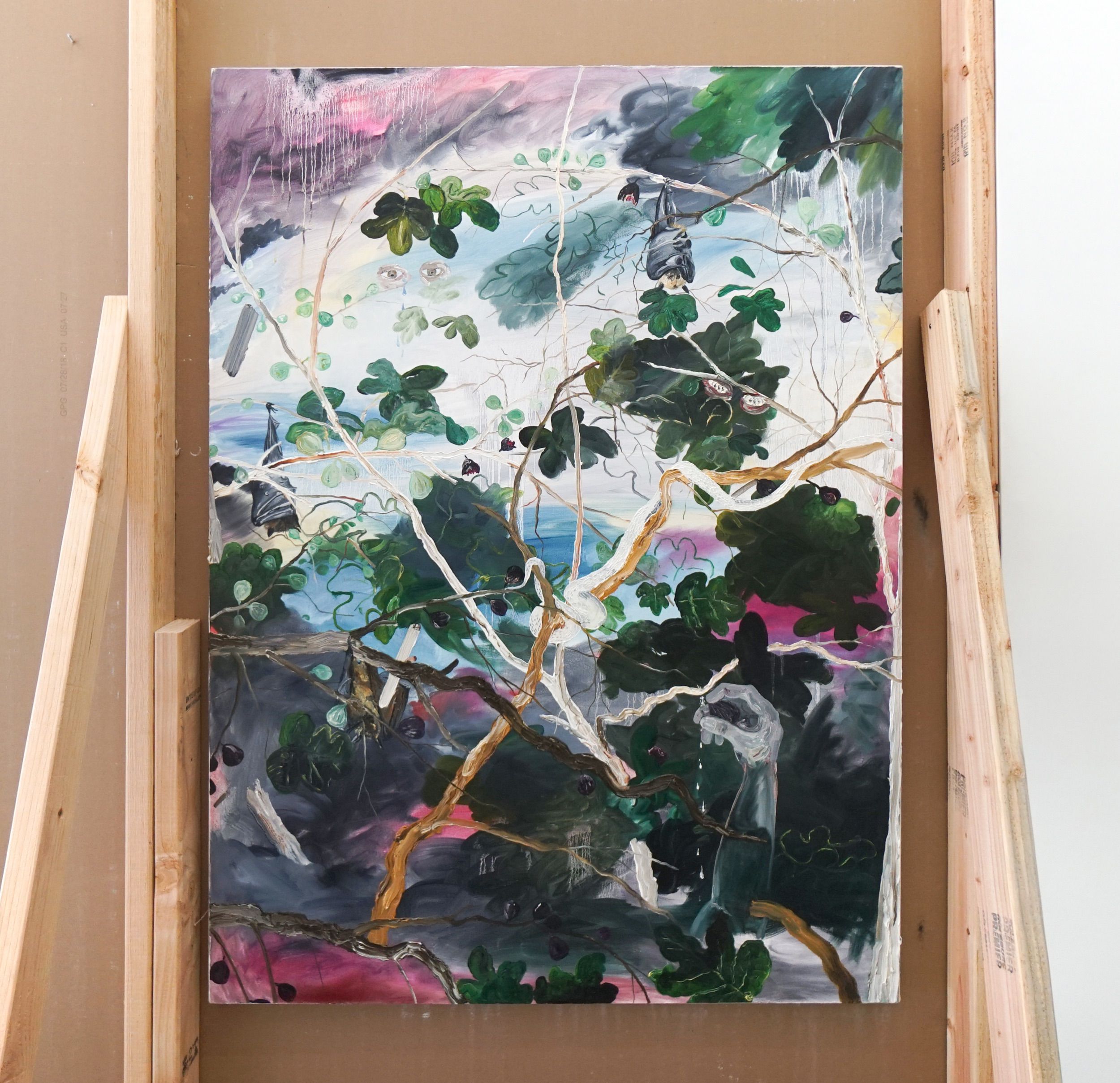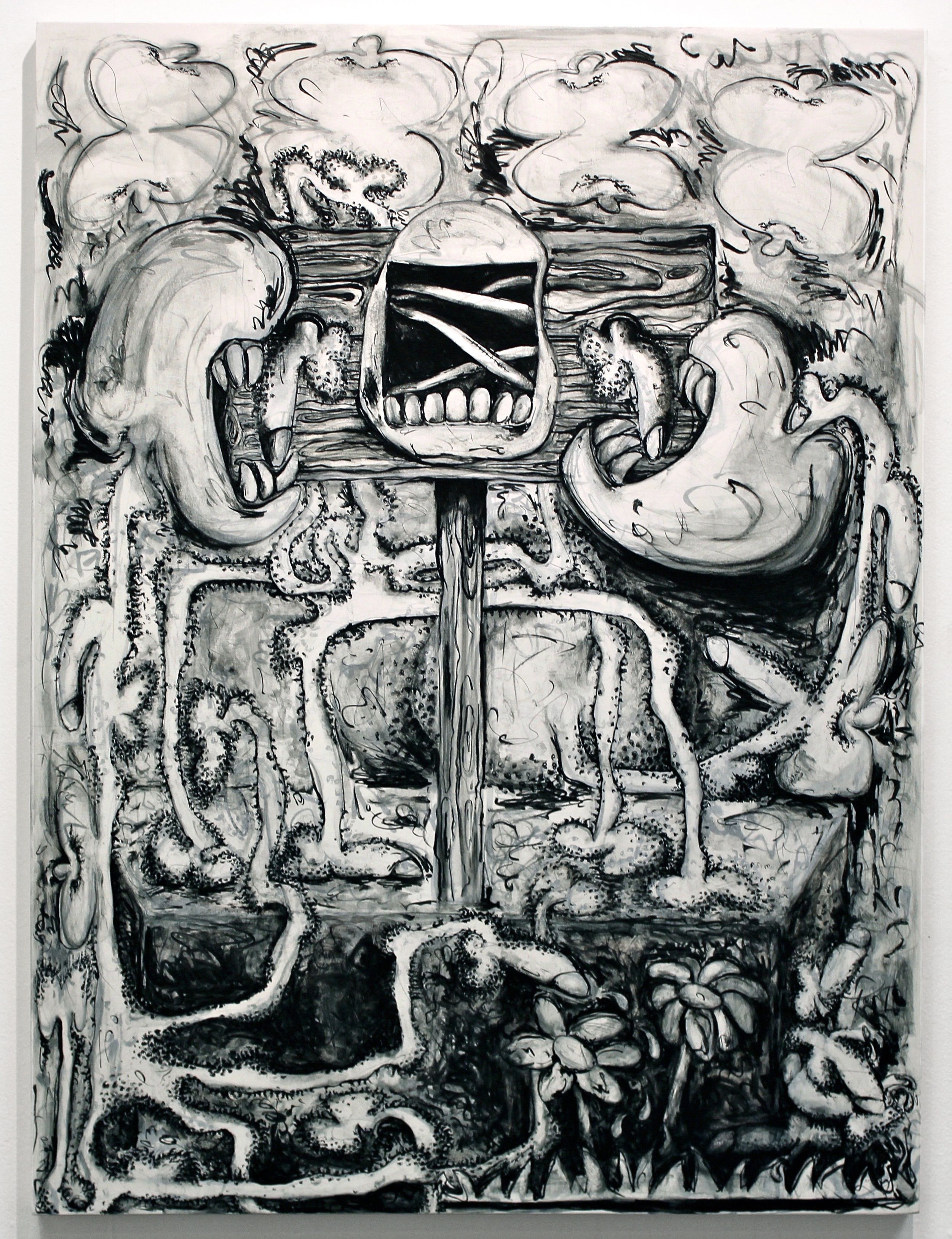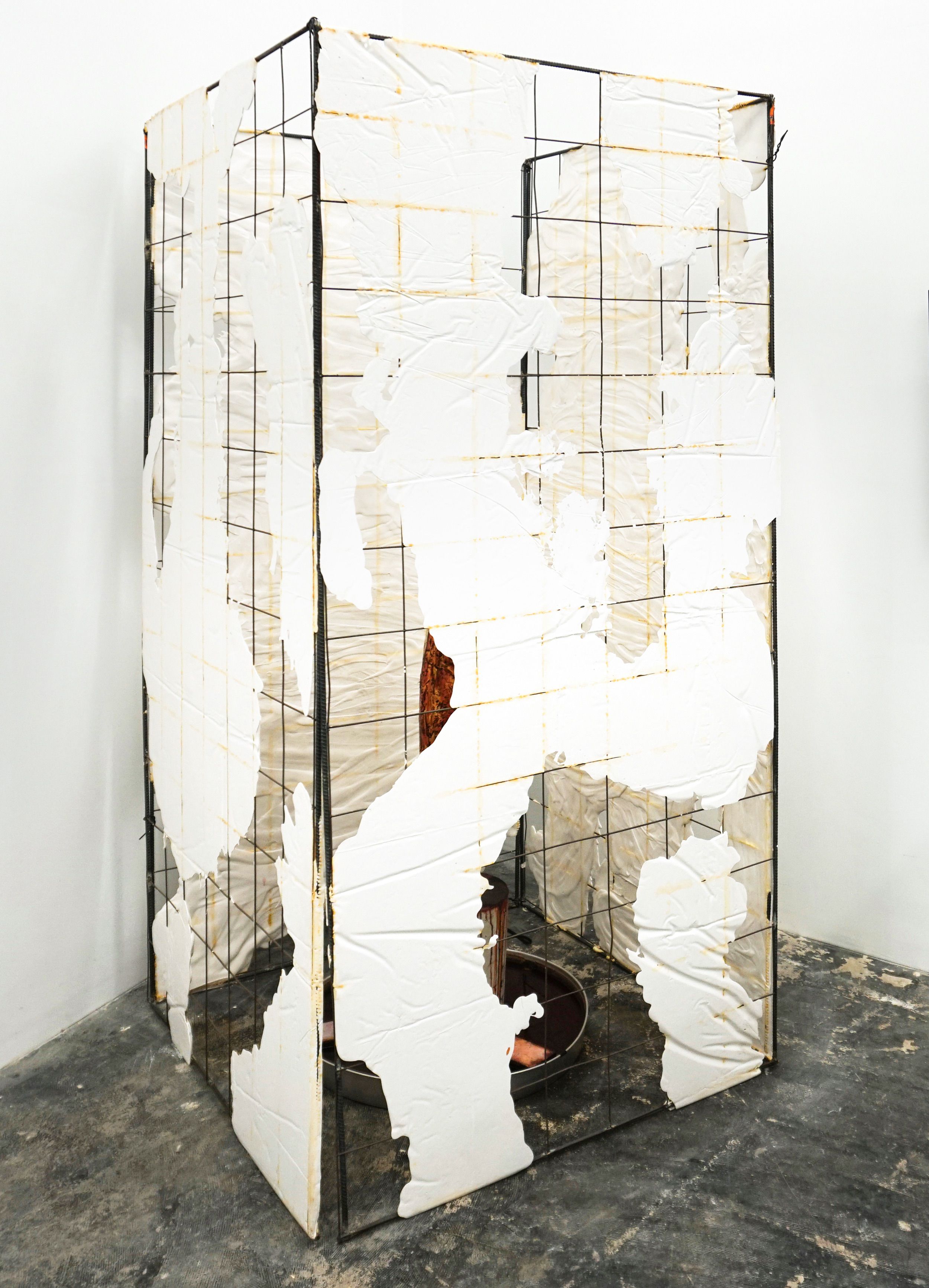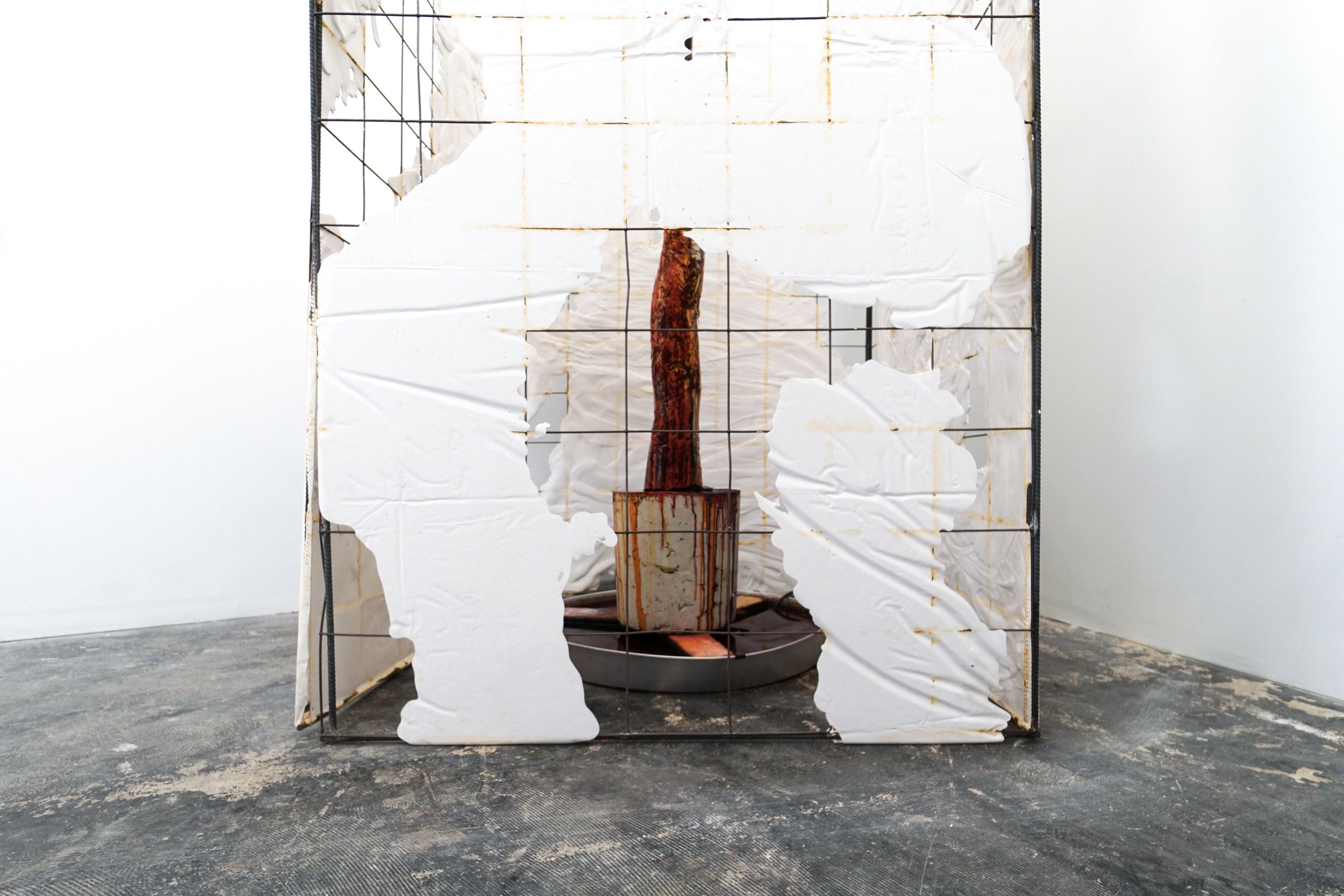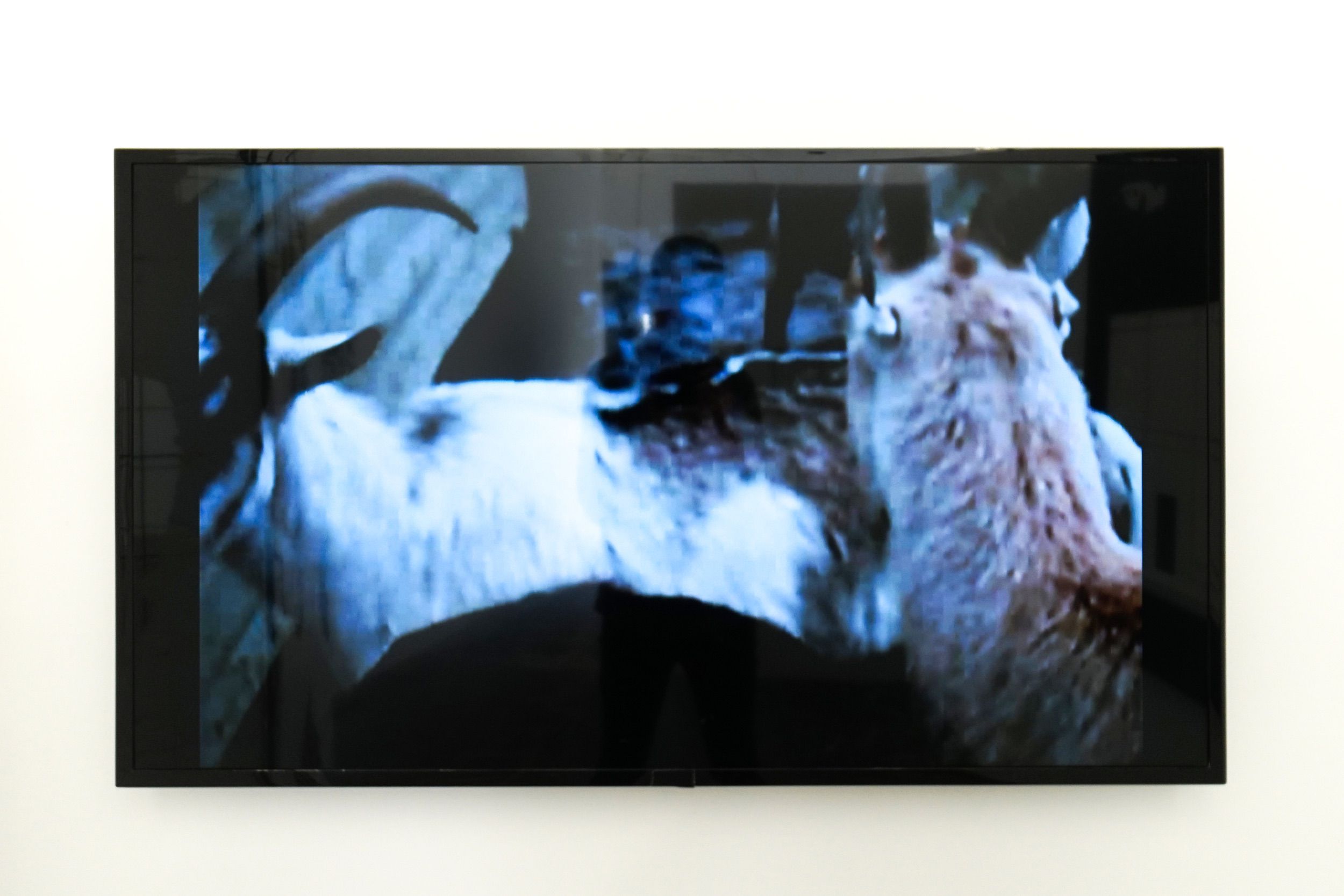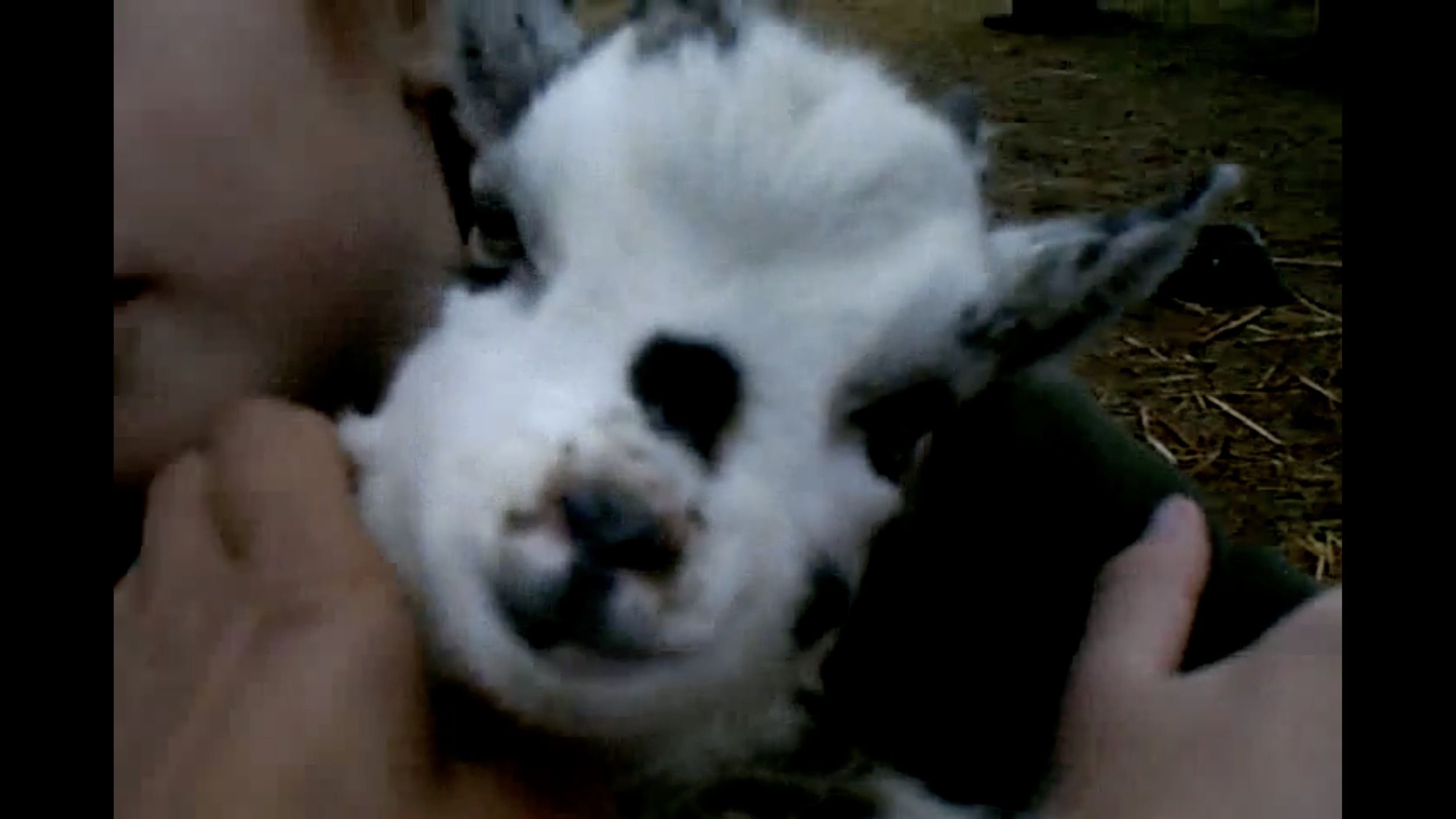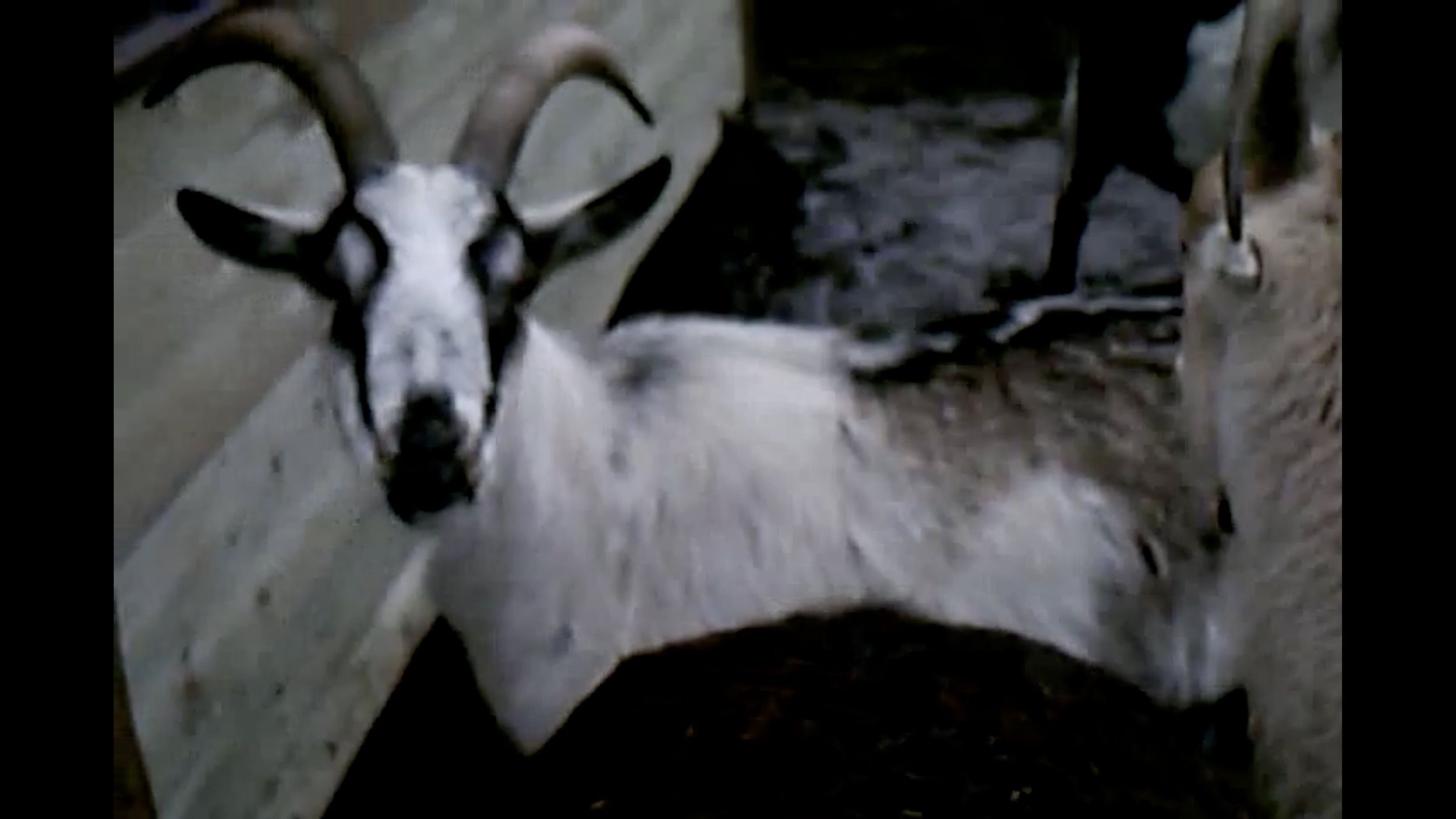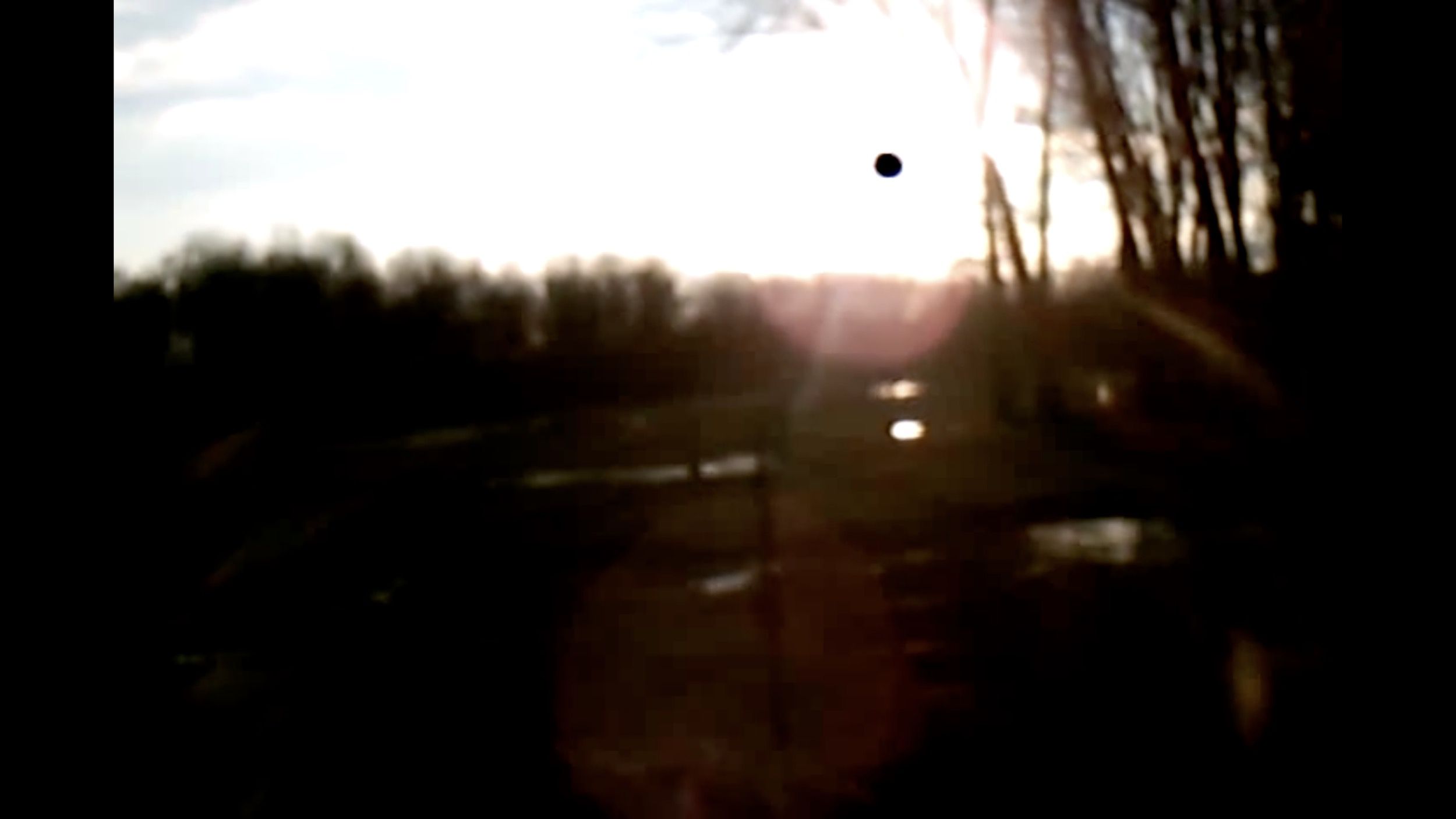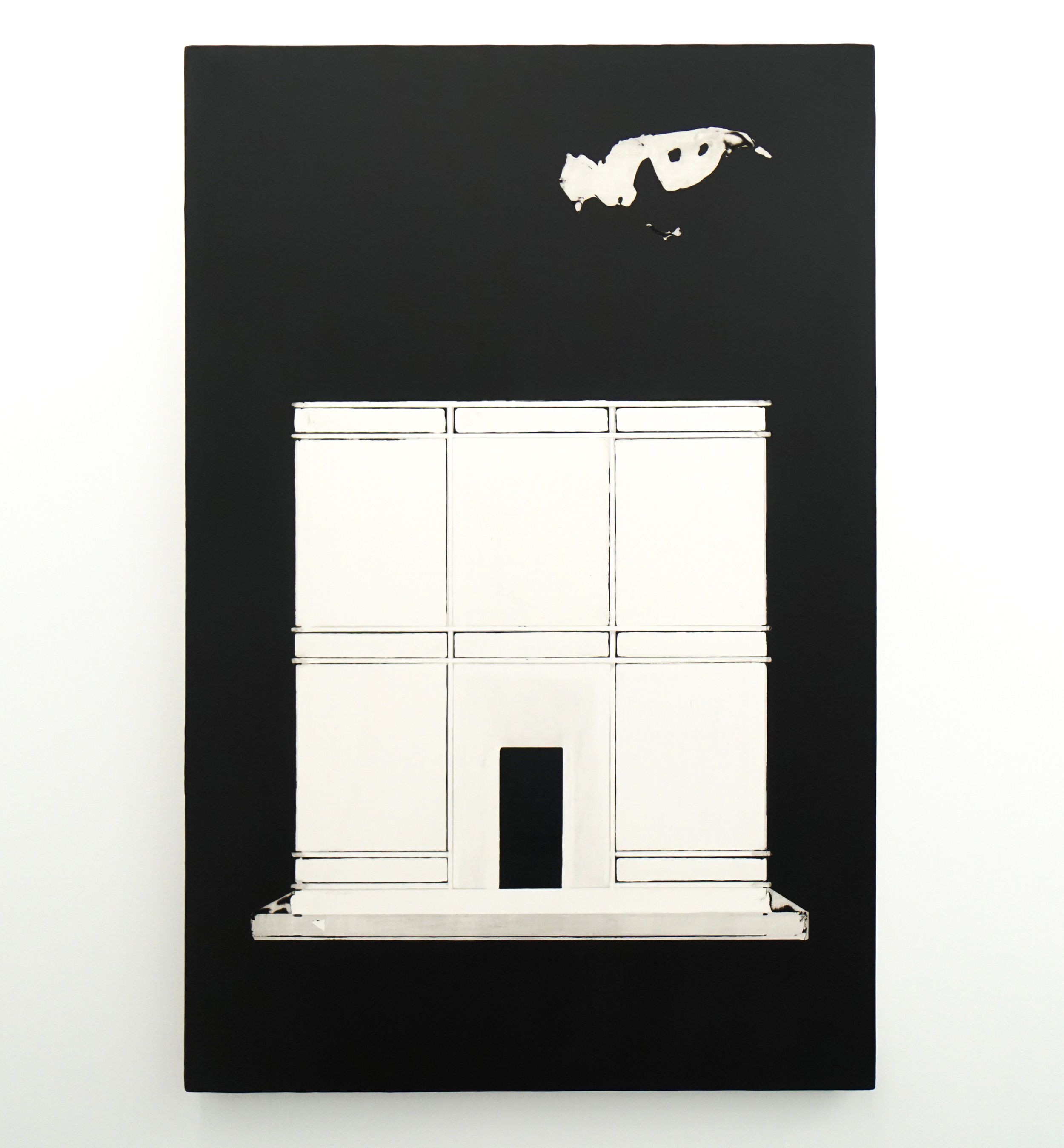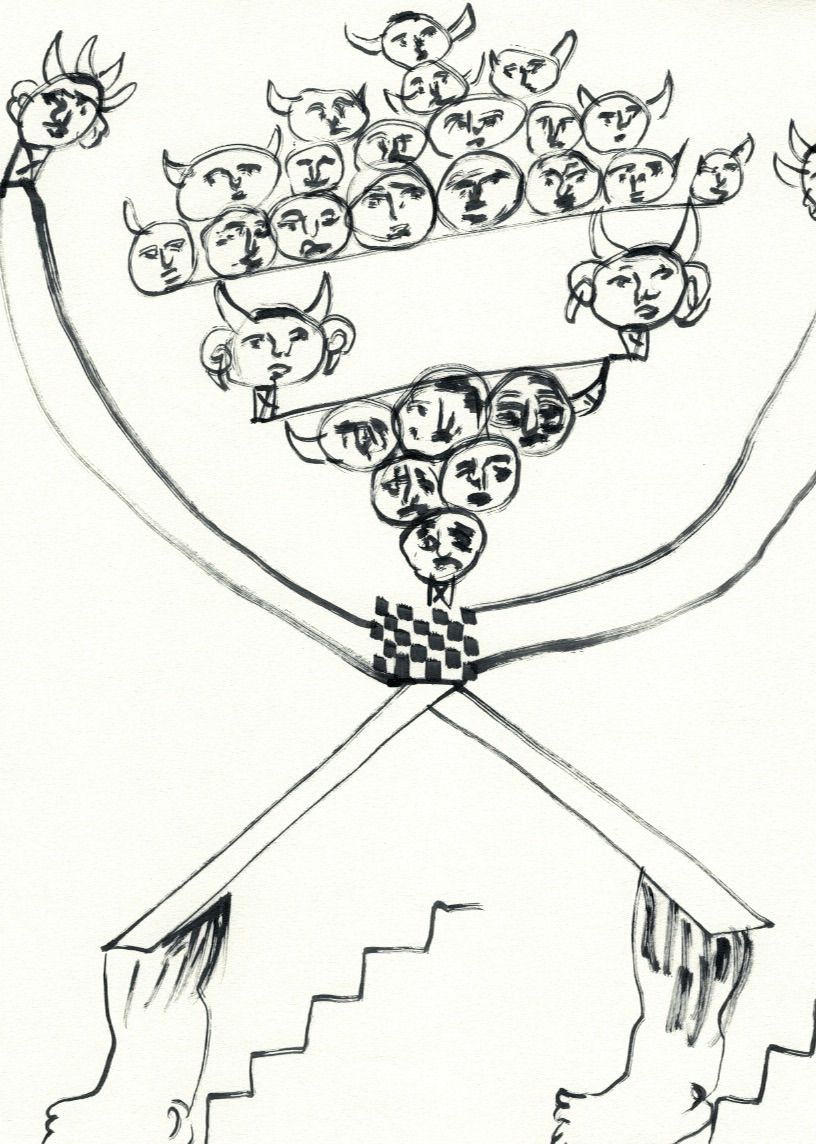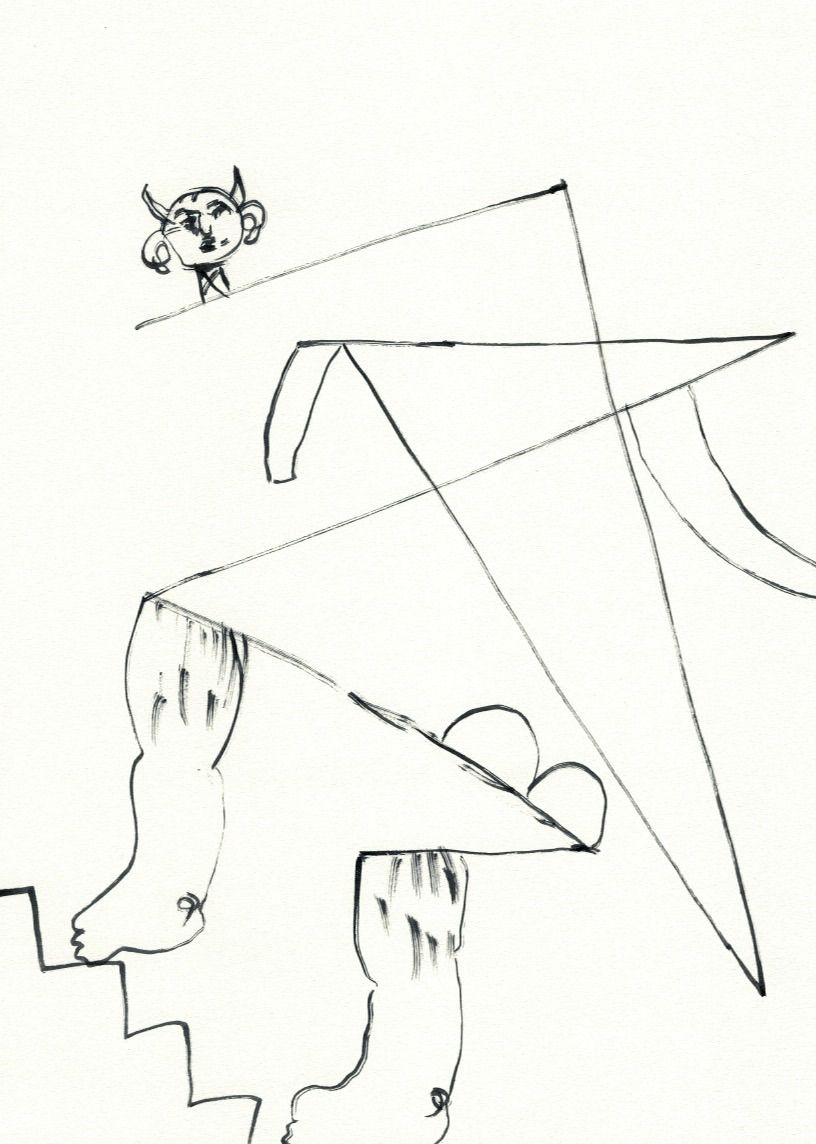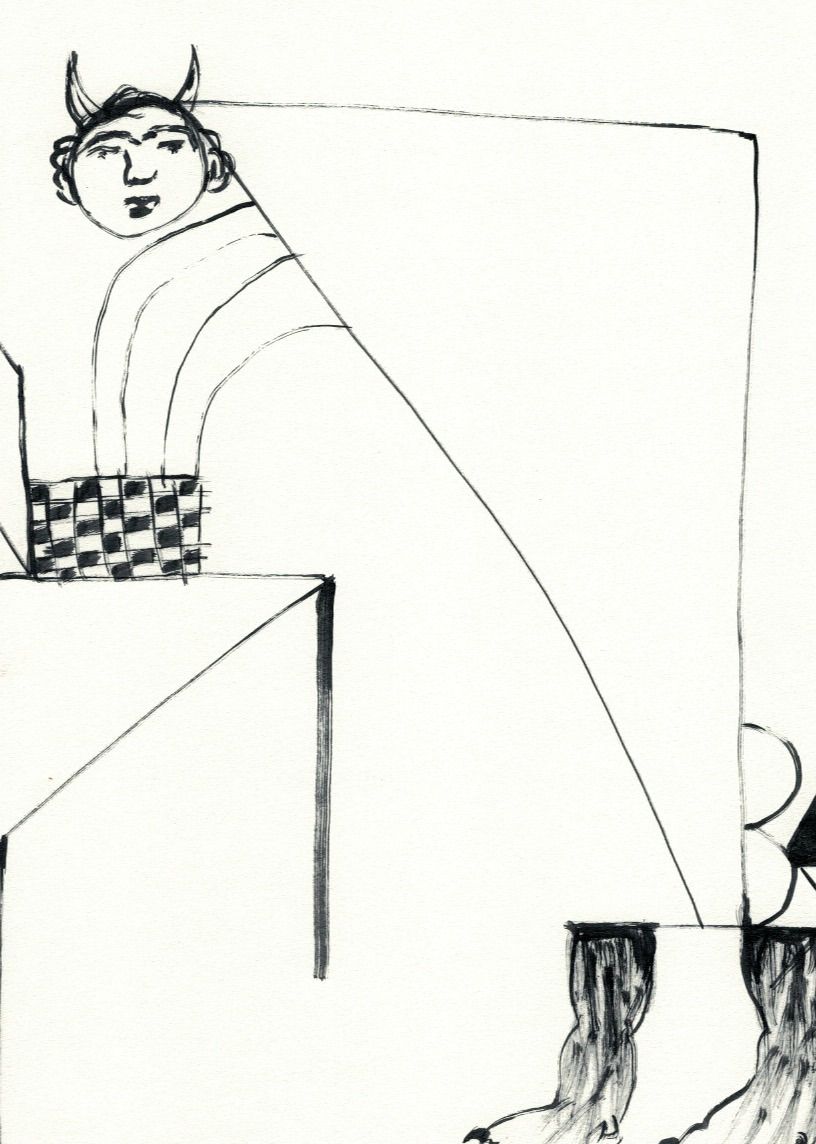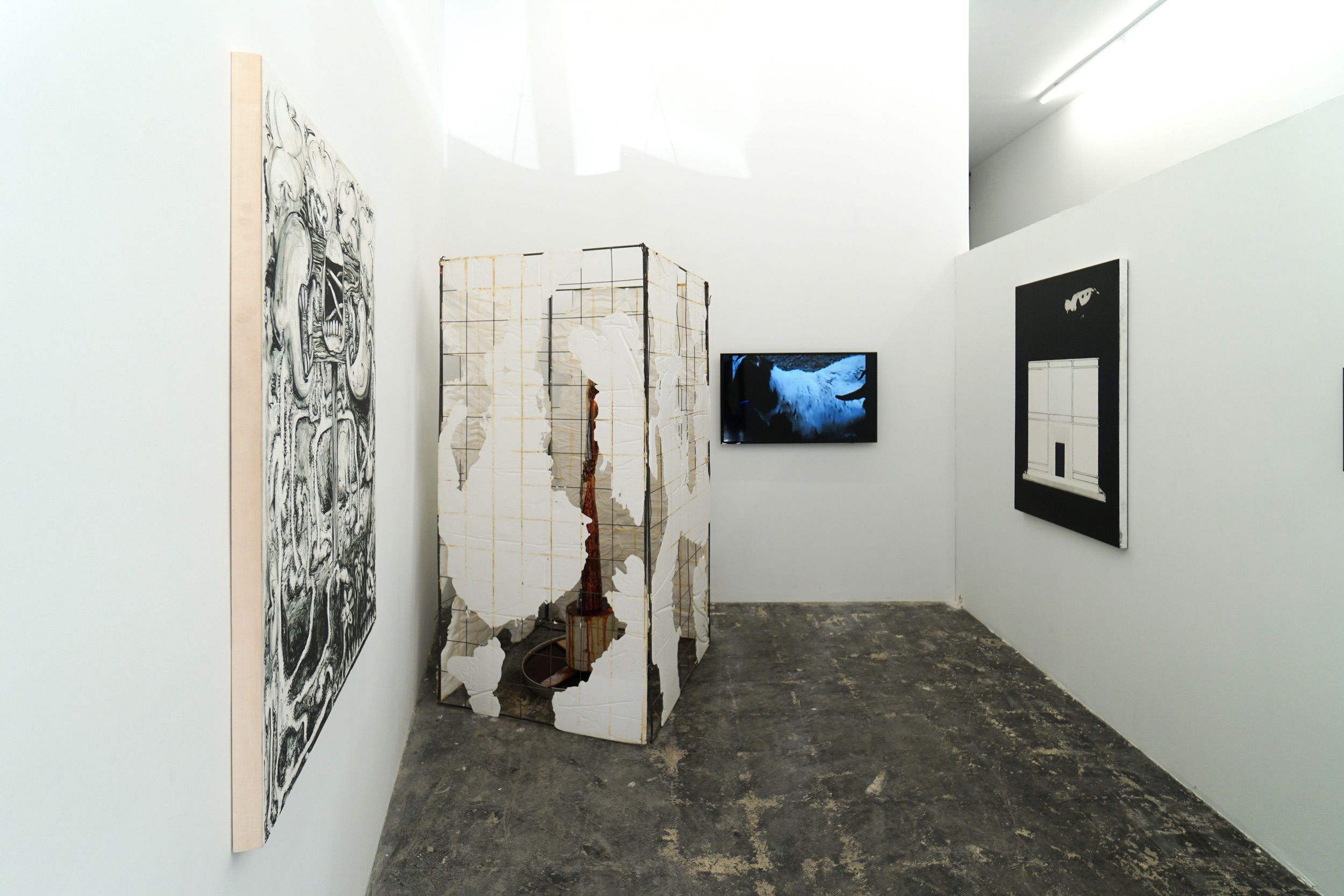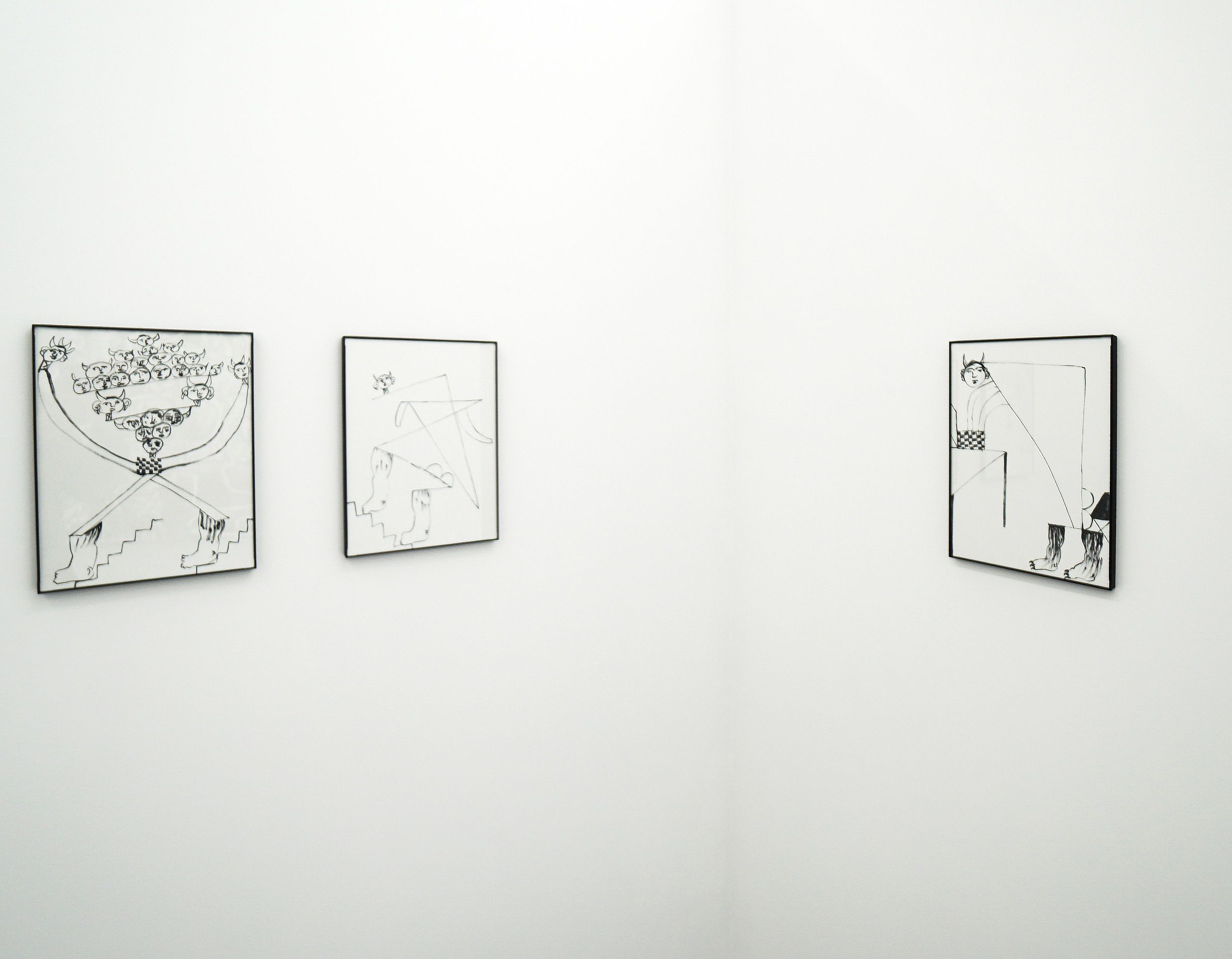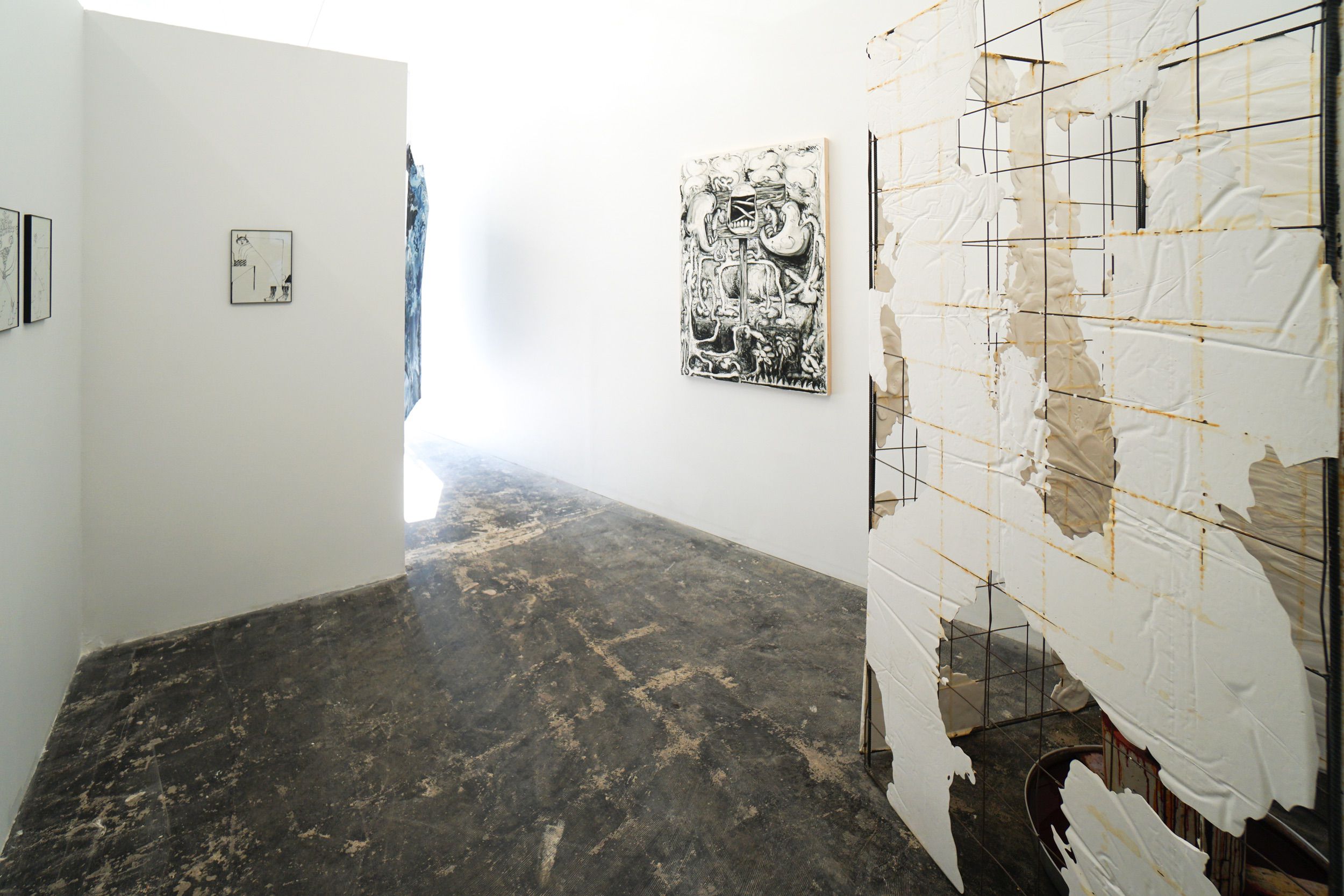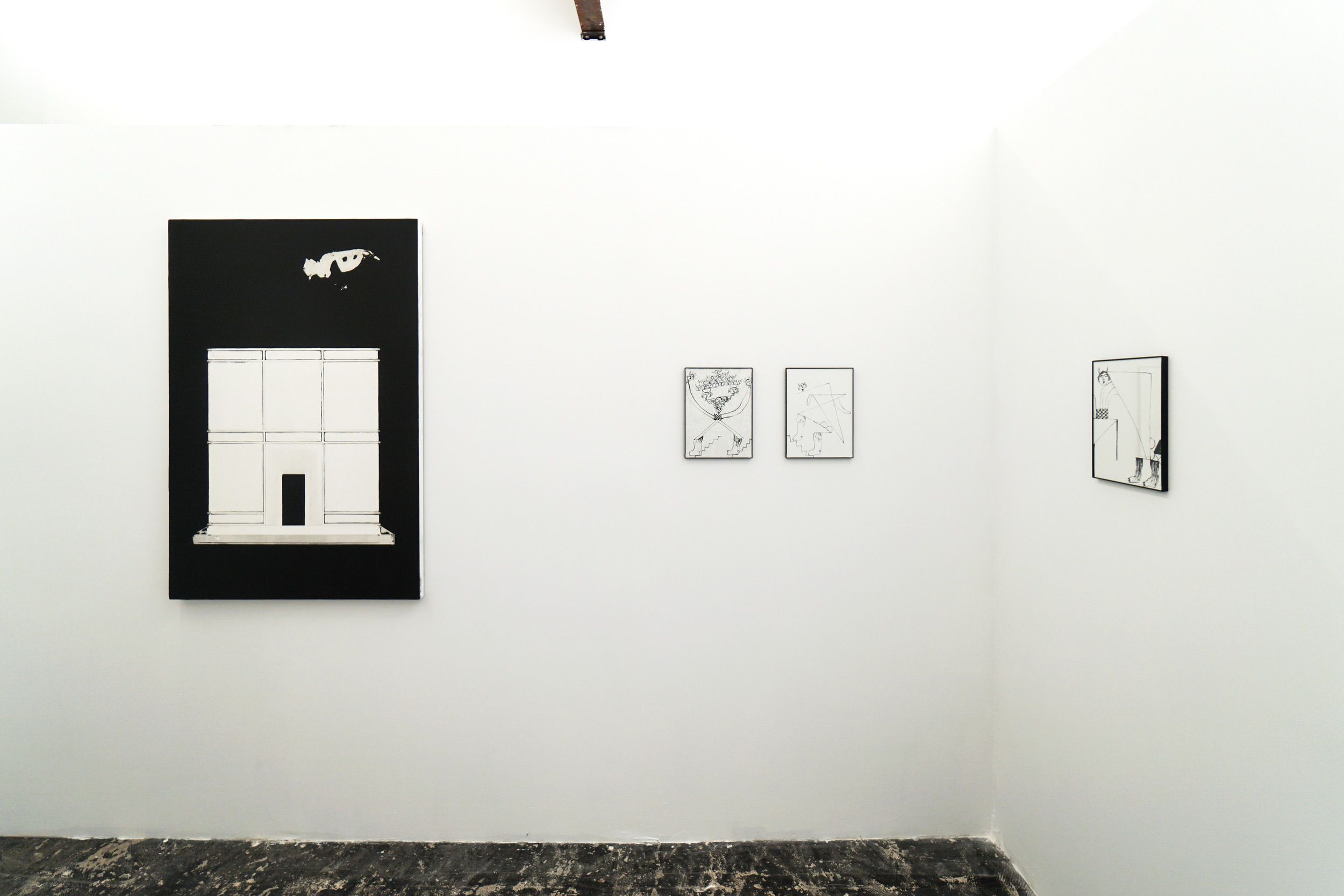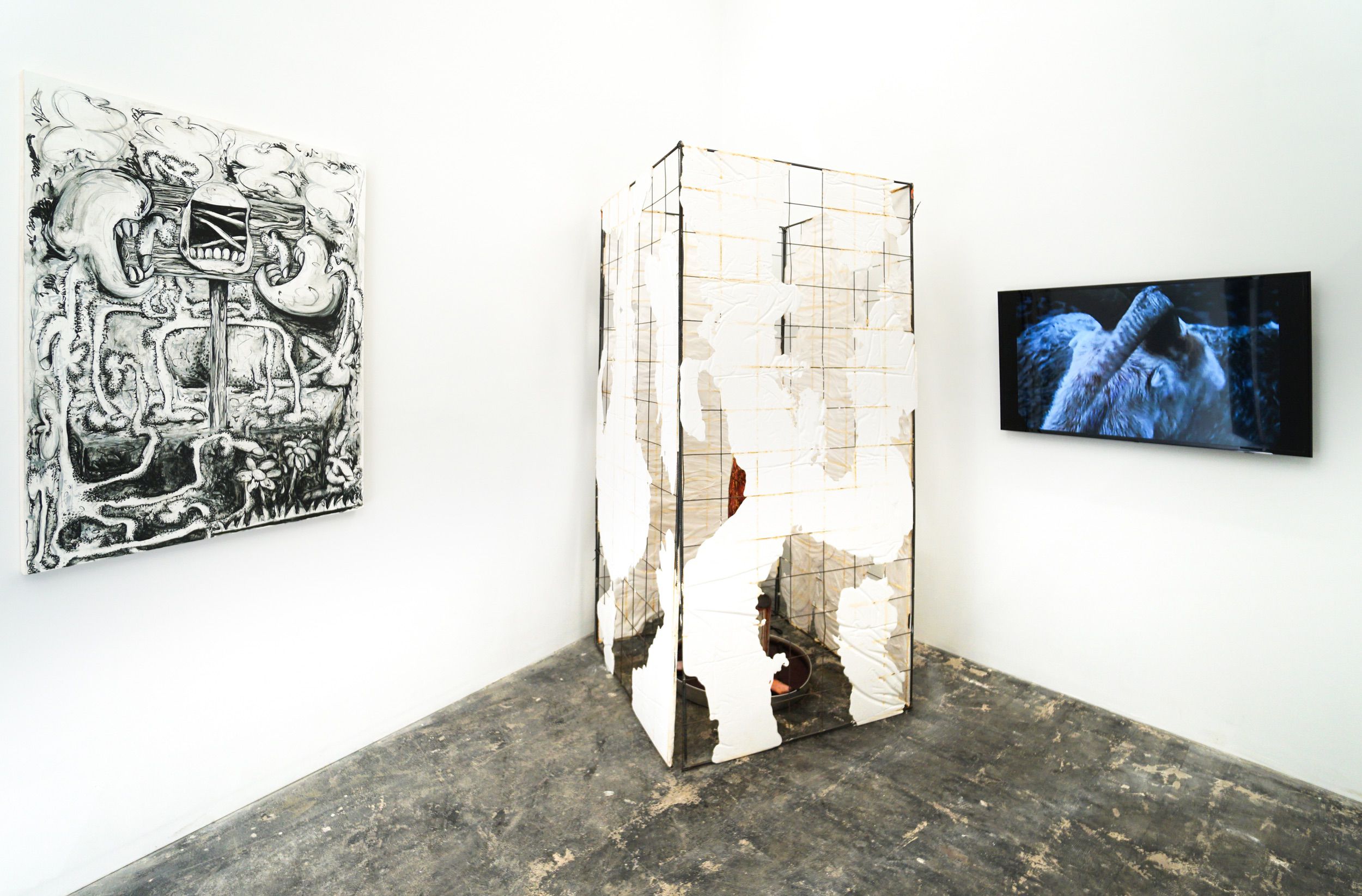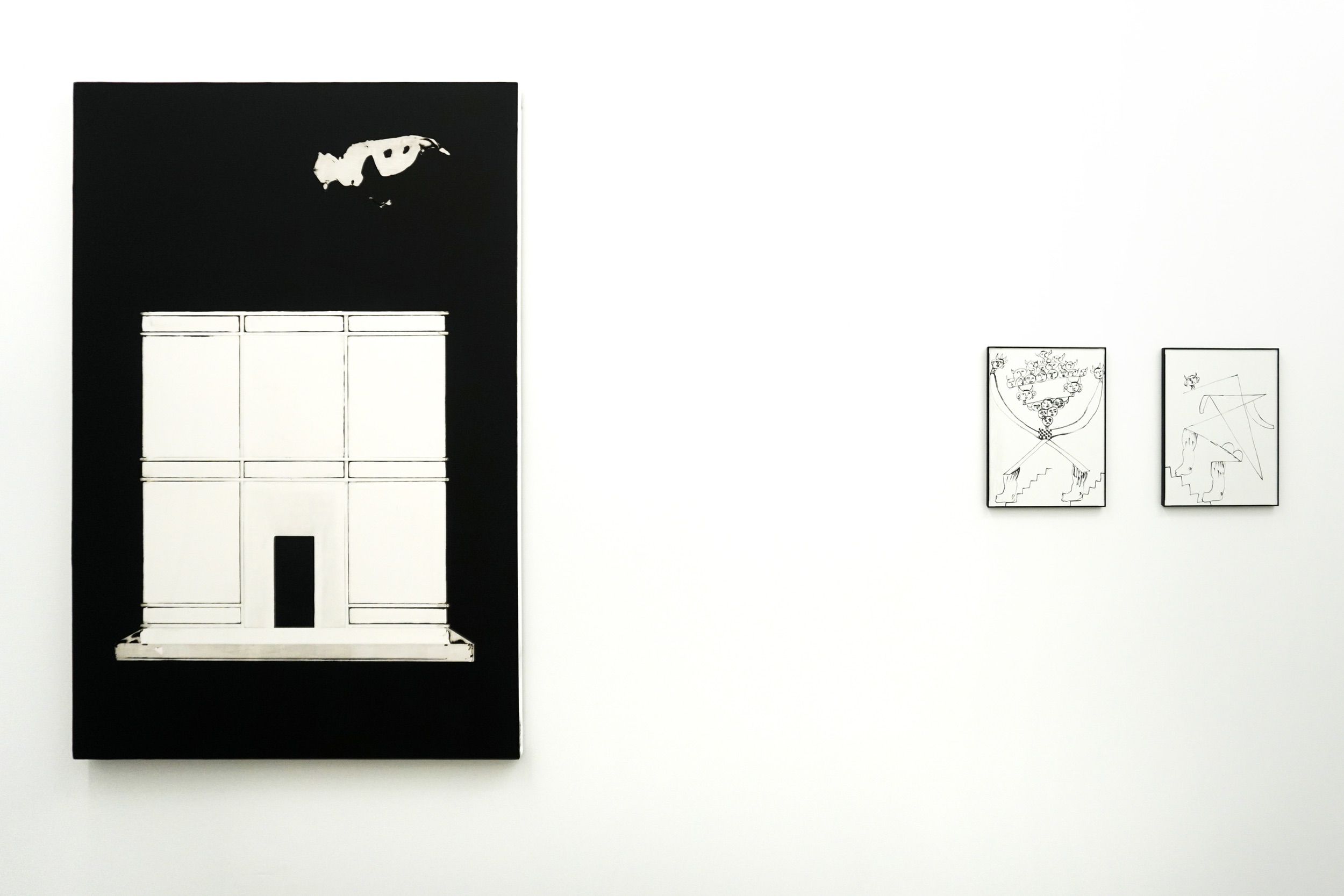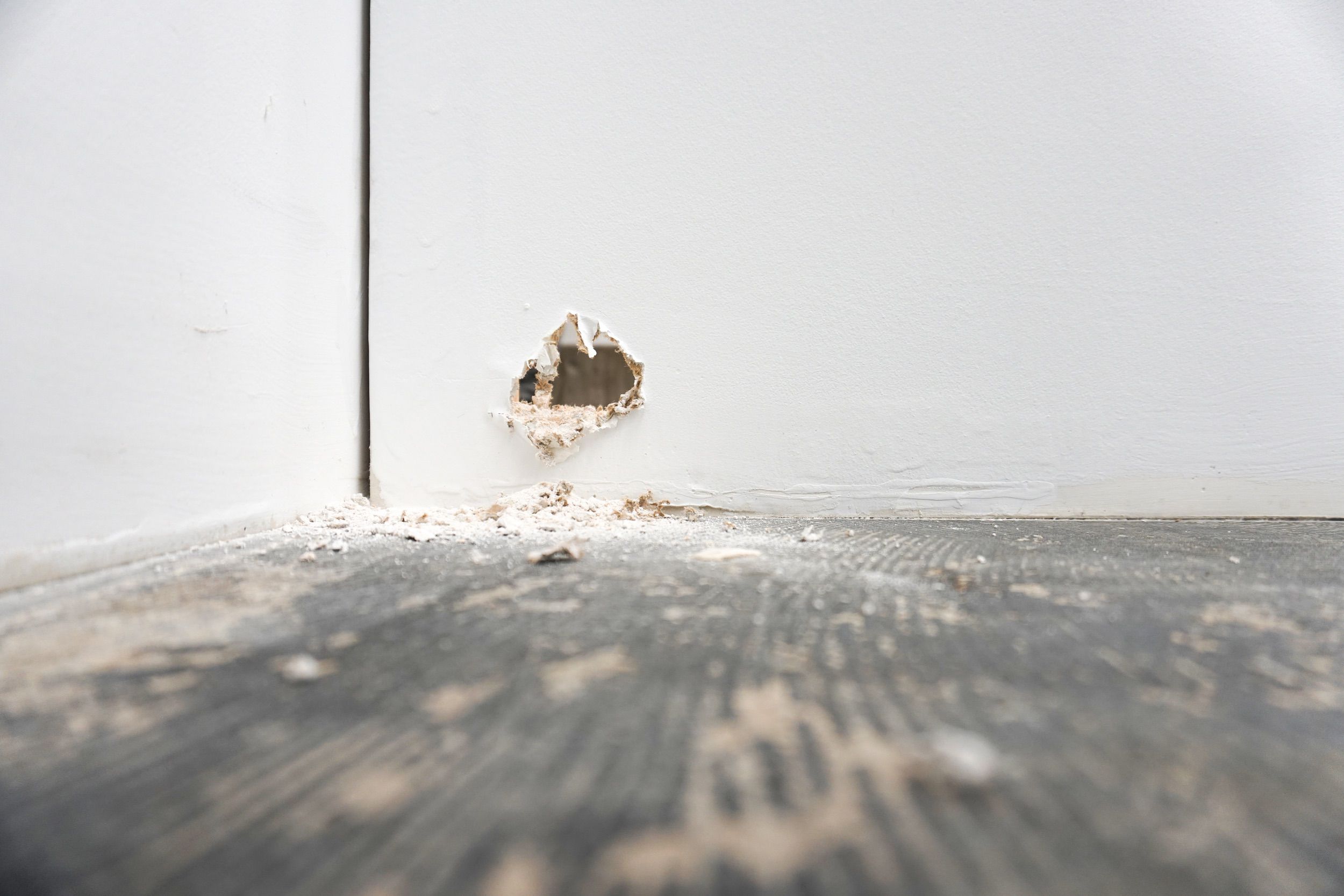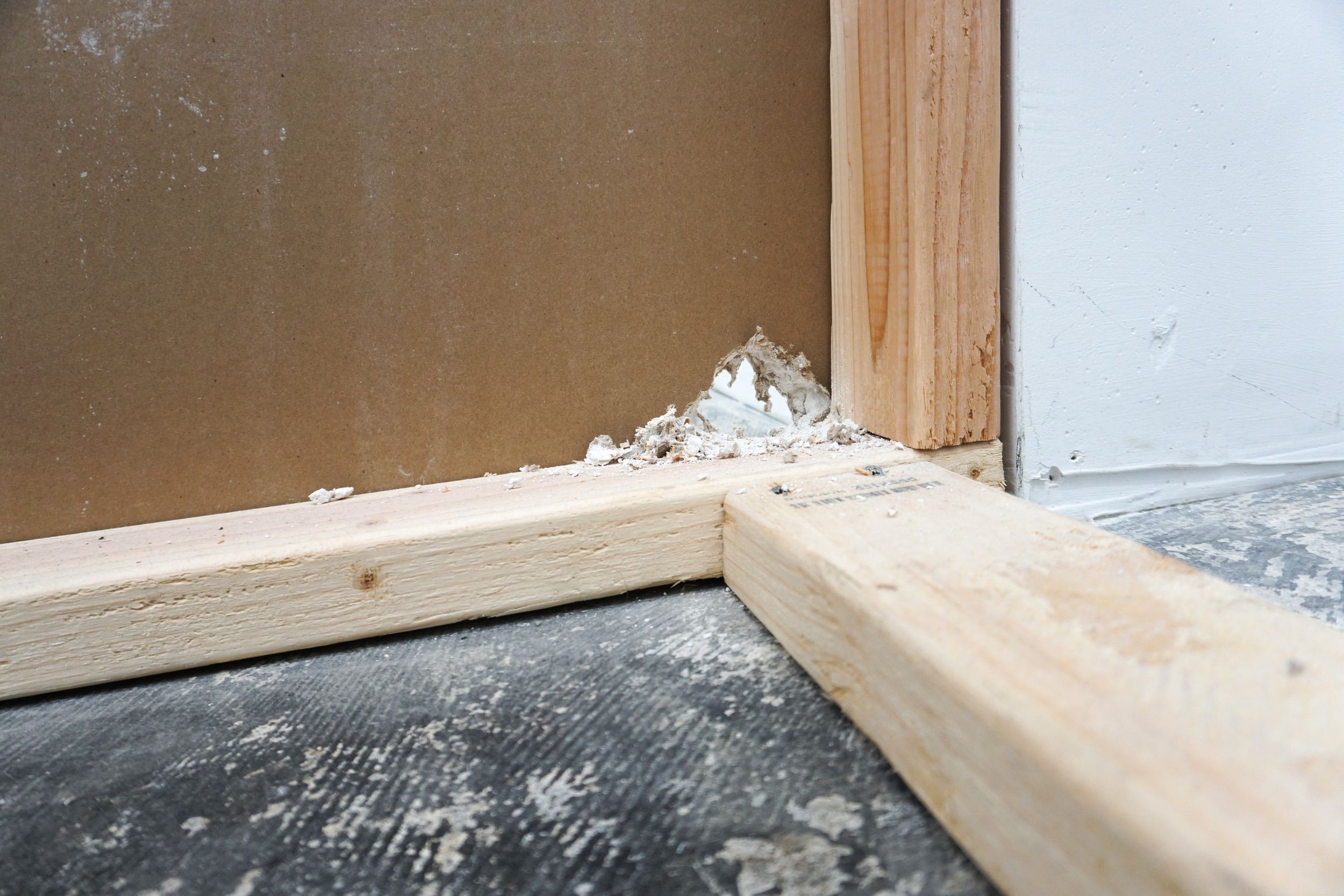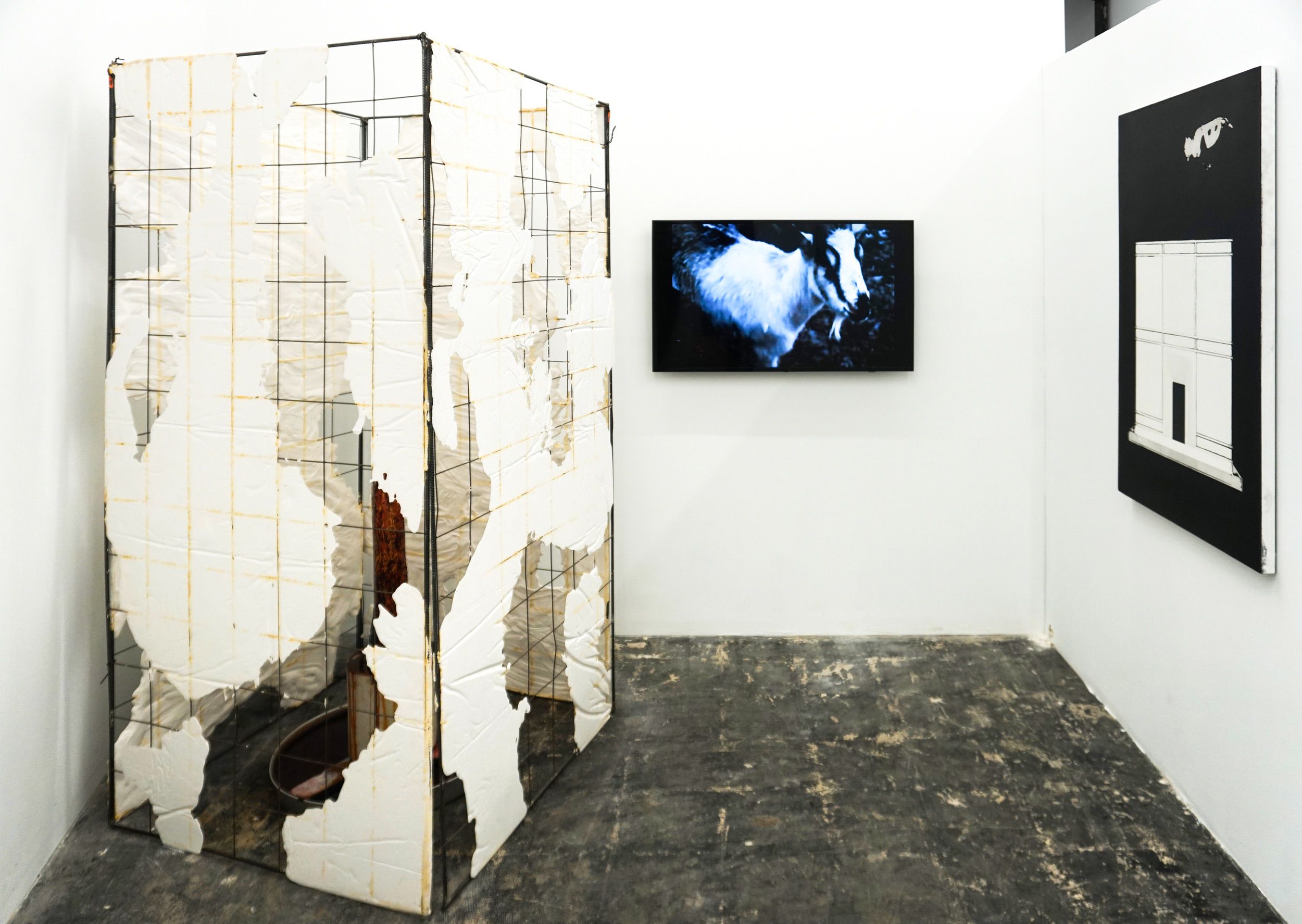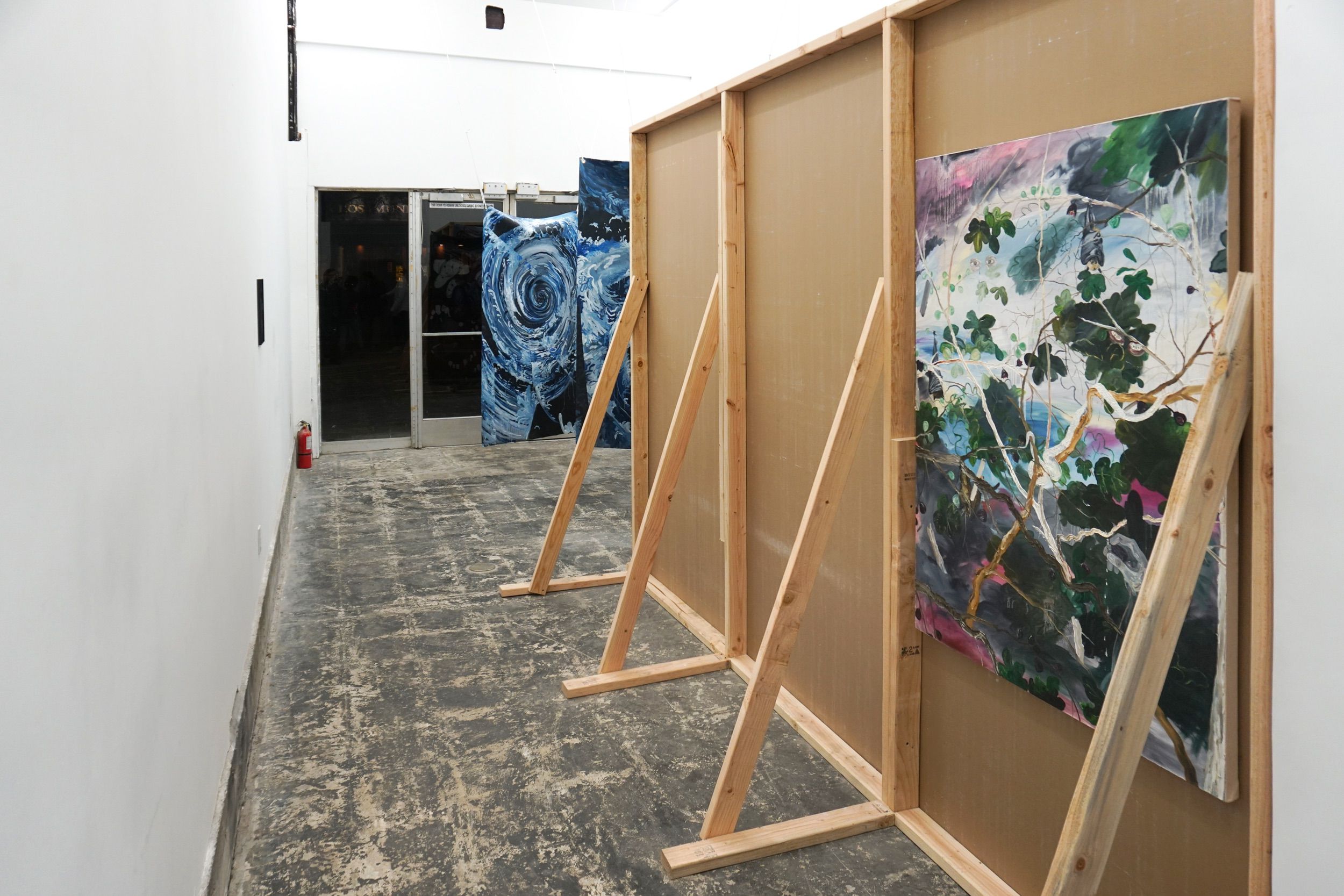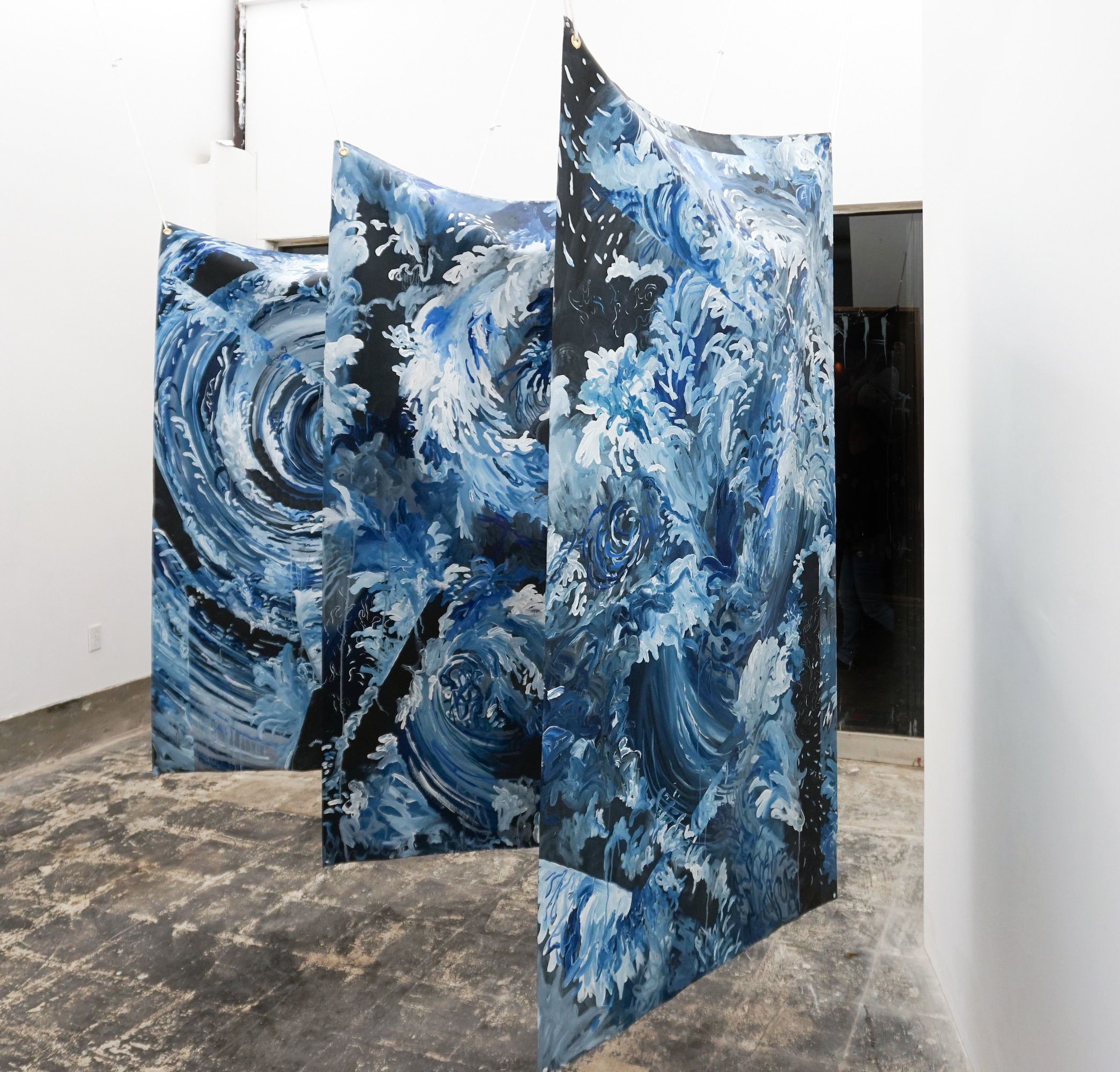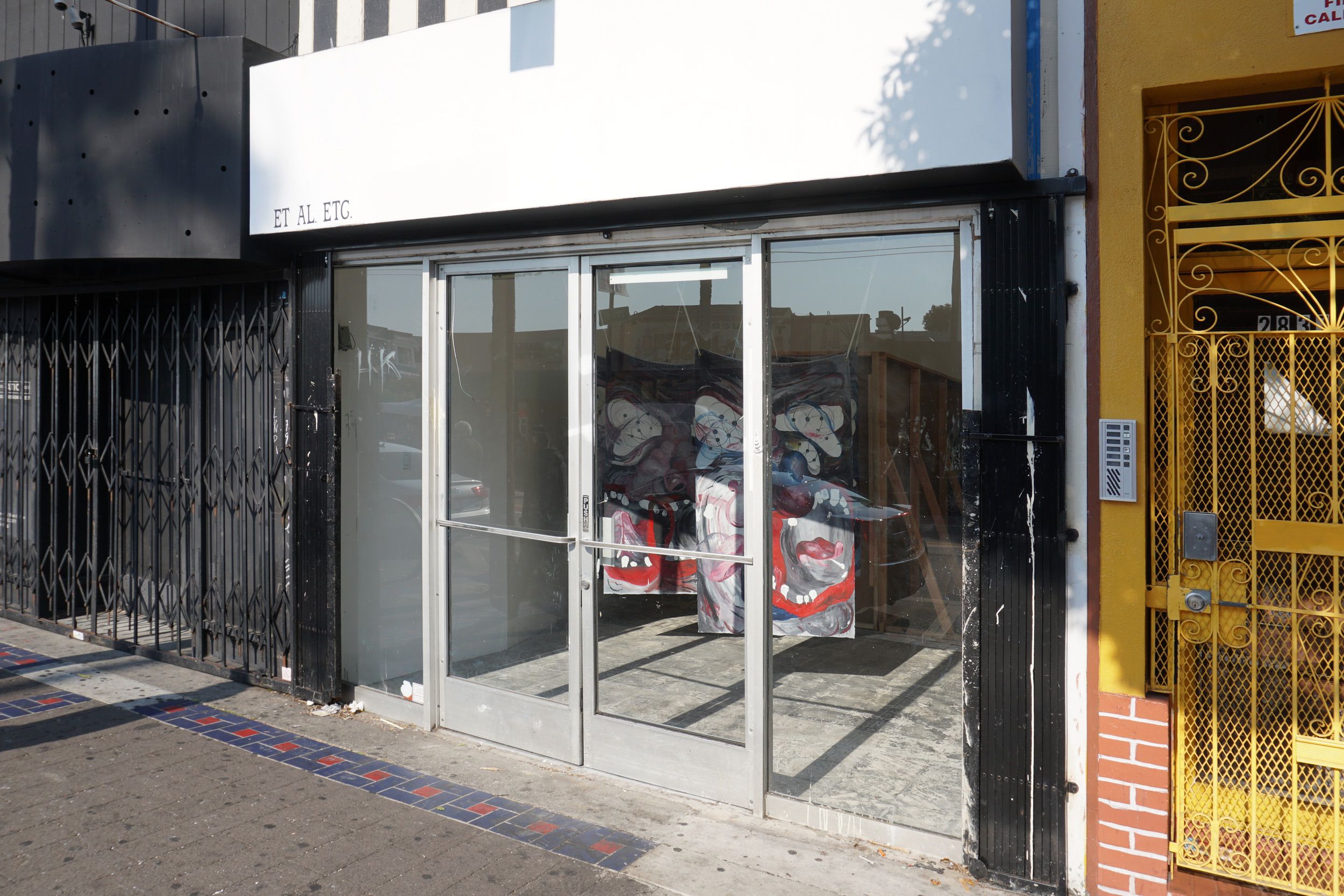Et al. etc. presents
Morgan Mandalay presenting
Topography of a Terrestrial Paradise
Christopher Culver
Timo Fahler
Morgan Mandalay Angie Jennings
Nasim Hantehzadeh
Iman Raad
August 11 - September 8, 2018
Opening reception: Saturday, August 11, 6:00 - 9:00 p.m.
One of the first acts of the newly proclaimed king was to call for the construction of what was described as a defensive wall, meant to protect from outside invasion. Soon after Thiers Wall, as it would come to be known, was constructed, the city went under rapid reconstruction. The narrow streets that wound through the city center were widened, displacing the inhabitants to the outer edge of the city in an area known as “the zone,” a deep ditch along the wall that was at once part of, and a place apart, from the city.
The zone became a manifestation of unbridled liberty and sovereignty from the stifling rules of the kingdom. Outside the walls you could live as you wanted. You could sing, shout, drink, smoke, fight and be merry in whatever way suited you at any given moment of the day or night. The Zone, to those who actively sought it out, was a paradise of limitless hedonistic opportunity and minimal repercussions, a heady mix that saw its population swell over its nearly 100 years.
The Siege of Paris lasted 4 months starting in 1870. It could’ve ended much more swiftly, but the Prussians decided it was wiser to break French morale and starve them into submission and so they drew it out. Indeed, behind their 30 year old wall the Parisian did run out of food. Rather than submit, the bourgeoisie tore into the Jardin des Plantes and the National Zoo and feasted on elephant, kangaroo and begonias. In this paradise they were given dominion. The city’s poorest, those who had been the catalyst for the overthrow of the king, who defended the city, ate rats, if they were lucky. But mostly, they starved. Behind the walls, despite efforts and decrees by the French government one part of the population found itself exposed to the horrors of hunger and absence while the class favoured by fortune were barely touched by such deprivations.
The word “paradise” is derived from an ancient Iranian word, pairi-daêza, a walled garden. It became associated with the Garden of Eden in the Greek translation of the Bible as they had adopted pairi-daêza as parádeisos into their language likely during the hundreds of years of conflict and conquest between the Greek and Persian Empires. Implied in the idea of paradise, is that some are in and some are out. In the concept of paradise promoted within a religious context, a wall creates space; dividing friends from foes, good from evil, nature run amuck from sanctuary. But of course, as we know the snake still gets in. Things aren’t so cut and dry. The wall made of earth doesn’t adhere to simplified binaries and can just as well divide good from good, family from family, and earth from earth.
This exhibition was conceived with three concepts of paradise – the walled garden – in mind: the Paris Commune, which sprung up in the direct aftermath of the Siege of Paris in 1870, Atanasius Kircher’s map of a Terrestrial Paradise from 1670’s, which, breaking from the biblical description, lacks singular cardinal direction for the Garden of Eden’s angelic protector, and the Eastern State Penitentiary in Philadelphia, the first US prison from 1820, which was a kind of proto-panopticon. Walls that bind. Walls that protect. Walls that withhold and survey. We build paradise through an assumed threat in a world constantly under siege. Within each Paradise lies someone else’s hell. In each instance, over time, it becomes necessary to escape paradise. There is no universal map.
-Morgan Mandalay
About the Exhibition:
Topography of a Terrestrial Paradise consists of two parts. On the exterior of the wall Et al. etc. is pleased to present a new body of paintings by artist and curator Morgan Mandalay. Morgan has also erected a wall, creating a new gallery within the space where he has curated a group exhibition with the work of Christopher Culver, Timo Fahler, Angie Jennings, Nasim Hantehzadeh, and Iman Raad.
About the Artists:
CHRISTOPHER CULVER’s (b. 1985 Miami, FL, USA) most recent body of work, Goodbye Houses, simultaneously describe the interiority and exteriority of sites representing self-liberation at its extreme. As Matthew Grumbach wrote, “As an amalgamation of architectural signifiers, Culver’s house paintings verge on discordance.” On view in this exhibition, Bath House (2017), depicts a former AT&T building turned bath house in Austin, TX. Culver’s fascination with the building is not only in it’s austere facade but in the poetic relationship between the buildings use as a communications exchange building to a site of bodily exchange. Christopher holds an MFA from University of Texas-Austin and a BFA from the San Francisco Art Institute. He has had solo exhibitions at Redling Fine Arts (Los Angeles, CA, USA), Yautepec (Mexico City, MEX), and Queens Nails Annex (San Francisco, CA, USA) and participated in group exhibitions at Lomex (New York City, NY, USA) and Lucas Page Gallery (New York City, NY, USA).
TIMO FAHLER’s (b.1978 Tulsa, OK, USA) work explores the ideas of use and reuse by way of embedding found objects and relics that relate to personal experiences and events into mixed media with plaster. A multiplicity of use becomes a multiplicity of perspectives. Born to a Mexican mother and a German-American father, the duality of Fahler’s defined as “American” heritage plays a significant role in his work. The paradox of fixed and unfixed objects and materials represent a multi-cultural aesthetic, communicated with the senses physically, emotionally and spiritually. pájaro en penetraveis exemplifies this logic, combining the formal qualities of Romanian sculptor Constantin Brancusi’s Bird in Space (1928) and Brazilian artist Helio Oiticica’s Penetraveis (1968) immersive cages. This work becomes a bridge between two cultures, both of which existed outside of the New York-Europe centric art dialogue of the 20th century. Fahler’s has presented his work in solo solo exhibitions at Ibid Gallery and LAXART (both Los Angeles, CA, USA) and in group exhibitions at The Underground Museum, LTD Gallery, and Egyptian Art and Antiques (all Los Angeles, CA, USA), Ballroom Marfa (Marfa, TX, USA), and Sometime Salon (San Francisco, CA, USA) among others. He has forthcoming exhibitions with Gamma Galeria in Guadalajara, Mexico, and Neuer Kunstverein Wuppertal in Germany. Fahler is also co-founder of the artist-run space BBQLA and acts as independent curator for projects throughout the United States. He received his MFA from UCLA and his BFA from the Kansas City Art Institute.
ANGIE JENNINGS is an artist who investigates hierarchical systems of circumstance, often employing strategies of subversion. Identity, isolation and the absurd are notions heavily imbued within her work. Through the use of imagery related to animalization and witchcraft Jennings illuminates the experience of the othered body being equal to that of the monster, bodies that are viewed as dangerous, while exploiting absurdities and confinements found in spaces of the white supremacist, capitalist, patriarchal gaze. Jennings received her MFA from the University of California San Diego, a BS in Art Education from South Dakota State University along with a Post Baccalaureate Certificate in Studio Art from Brandeis University. Jennings is a former student of Performance Art 101 taught by Kembra Pfahler, has attended La Pocha Nostra Summer School, and The Abramovic Method Workshop. Angie Jennings has recently exhibited and presented performances at The Women's Caucus for the Arts, Abode Gallery, Human Resources, OCHI PROJECTS, Perform Chinatown (all Los Angeles, CA, USA), NADA Performance, NADA Fair, New Media Caucus/CAA Conference, NY (both New York City, NY, USA), Galerie Christine Myer (Munich, GER), The Mingei International Museum, SPF15 (both San Diego, CA, USA) and Spinello Projects, FL (Miami, FL, USA). Jennings currently lives and works in San Diego, CA.
NASIM HANTEHZADEH’s (b. 1988 Oklahoma City, OK, USA) paintings on first glance appear to depict bright gardens, full of energy. But what becomes clear spending time with her work is that first appearances can be deceiving. The flowers in the garden Hantehzadeh’s Awkward Moment spring from roots of violent phalluses which appear to lunge and destroy one another. The scene operates as both a pictorialization and a warning, unearthing a normalization of violence perpetuated by hidden systems, that, like weeds, are not easy to root out. Nasim’s work has been exhibited nationally and internationally in galleries such New Release (New York City, NY, USA), Human Resources, Driveway 327, Skibum McArthur (all Los Angeles, CA, USA), Lefebvre and Fils (Paris, FRA), ISA (Umbria, ITA), and Mana Contemporary (Chicago, IL, USA). Hantehzadeh grew up in Tehran Iran where she started her art education at the Art and Architecture Tehran Center University in 2007. Soon after, she moved back to the United States to continue her art studies and earned a BFA degree at the School of the Art Institute of Chicago in 2013, and an MFA degree at the University of California, Los Angeles in 2018. Hantehzadeh is the recipient of Resnick Scholarship, D’Arsy Hayman Scholarship, and the Art Council Award at UCLA.
IMAN RAAD (b. 1979 Mashhad, Iran) makes paintings, drawings and sculptures which present a contradictory combination of beauty and fear. His work addresses humankind’s anxieties by staging a traumatic scene of a disturbance in reality. Raad’s ongoing series of drawings, a portion of which are presented in this exhibition, Self Portraits (others), use the Persian folkloric figure of the div (a kind of demon or wrong-god) as a narrative driver. The div, who are contradictory in nature, becomes broken up, abstracted and distorted while navigating landscapes described by simple gestural marks. They become equal part character and ornament with the space of the page, which is typical of the artists work that is generaal filled with ornamental elements extracted from traditionally decorative and neutral contexts and juxtaposed with present concerns and future plans. Aside from painting, Raad is also and internationally recognized graphic designer, included in Phaidon archive of 500 designs that matter, representing contemporary the Contemporary Persian Design Movement. Raad received his MFA in Painting and Printmaking from Yale University and is the 2017-2018 Shandaken Projects’ Paint School fellow. He has had solo shows at Sargent's Daughters (New York City, NY, USA) and Dastan Gallery (Tehran, IRAN) and will be featured in the 9th Asia Pacific Triennial of Contemporary Art (Brisbane, AUS).
MORGAN MANDALAY (b.1985 Long Beach, CA, USA) is an artist and curator interested in depicting and creating space. His paintings, which employ a number of motifs to explore notions of escape from political and economic systems hell bent on trapping us in racialized, sexualized, gendered, classed, codified and separated cells, often operate within exhibitions as dividers, backdrops, walls, and substrates for the work of other artists. The work in this show is double-sided, depicting screams and floods. The screaming figures are at once angels and demons and based on their Old Testament descriptions. Mandalay has had solo presentations of his work at City Limits (Oakland, CA, USA), Art Bogotá Proyectos (Bogotá, COL), Yautepec (Mexico City, MEX), and Helmuth Projects (San Diego, CA, USA). Mandalay’s work has recently been included in group and collaborative exhibitions at the Museum of Contemporary Art San Diego, Kimberly Klark (Queens, NY, USA), Deslave (Tijuana, MEX) and LVL3 (Chicago, IL, USA). He has forthcoming solo exhibitions with BWSMX (Mexico City, MEX) and Cat Box Contemporary (Queens, NY, USA) in the fall. Curatorial projects have included SPF15, DATE NIGHT (both San Diego, CA, USA), which both operated without walls, and Sunday Project (Chicago, IL, USA).
